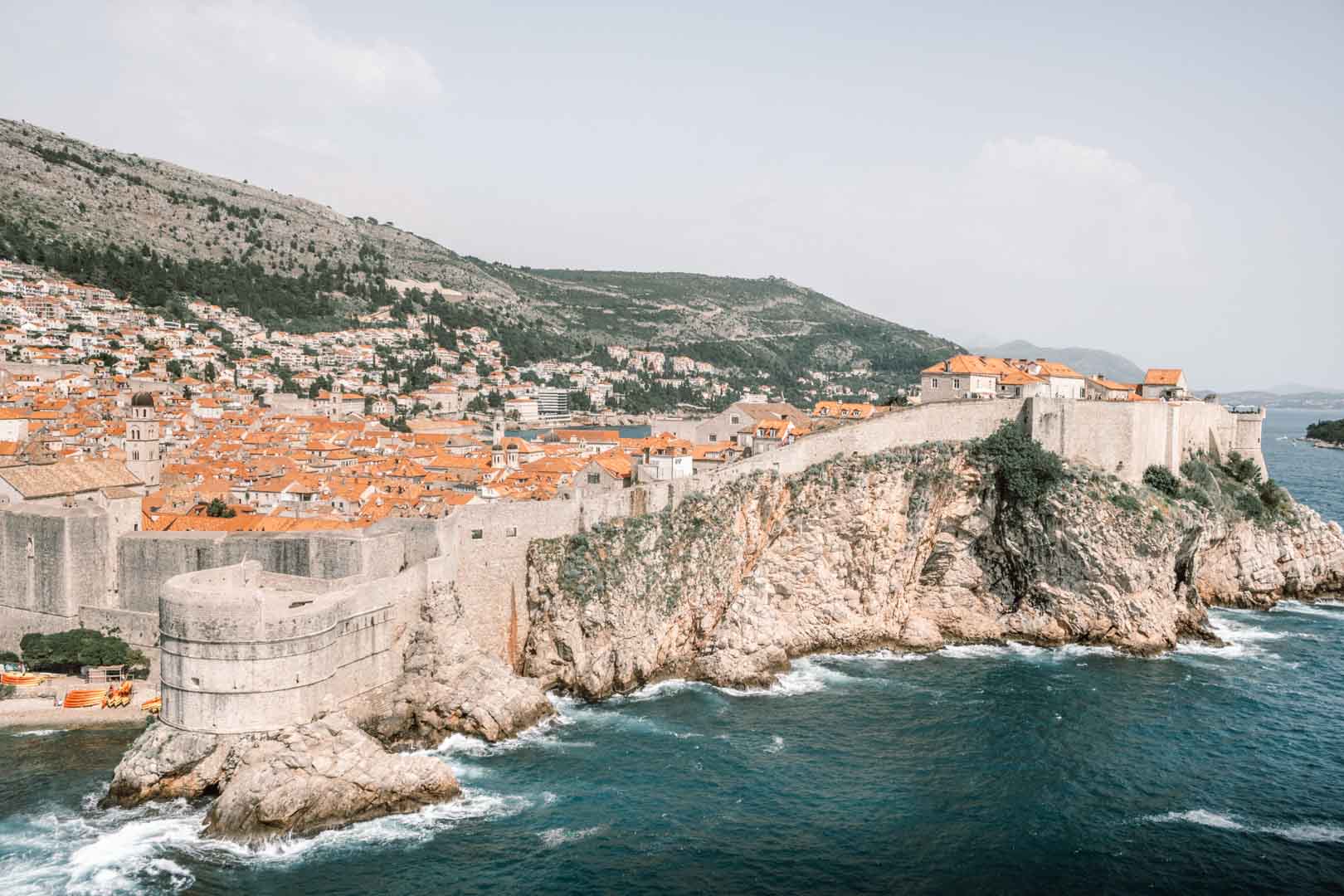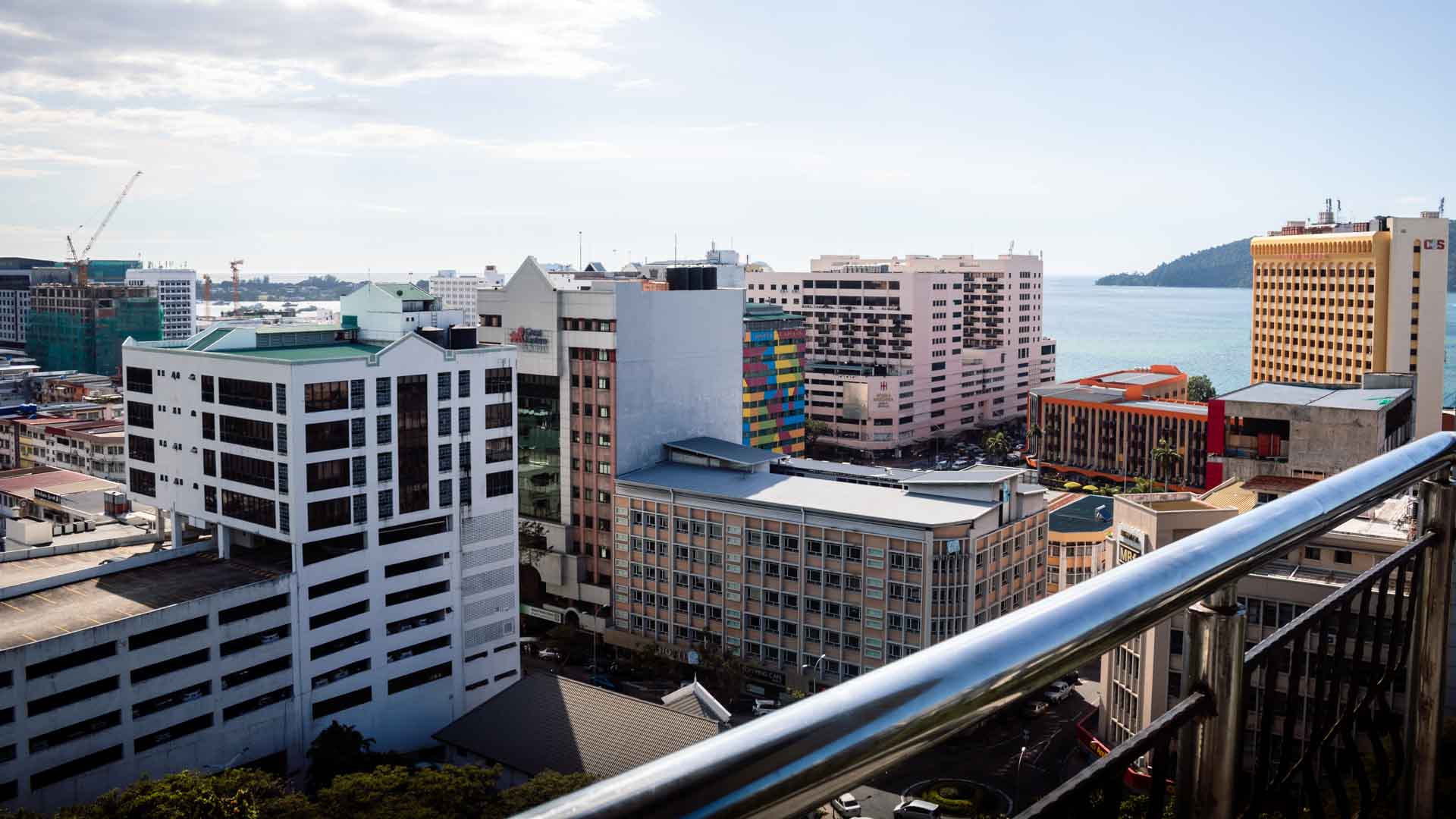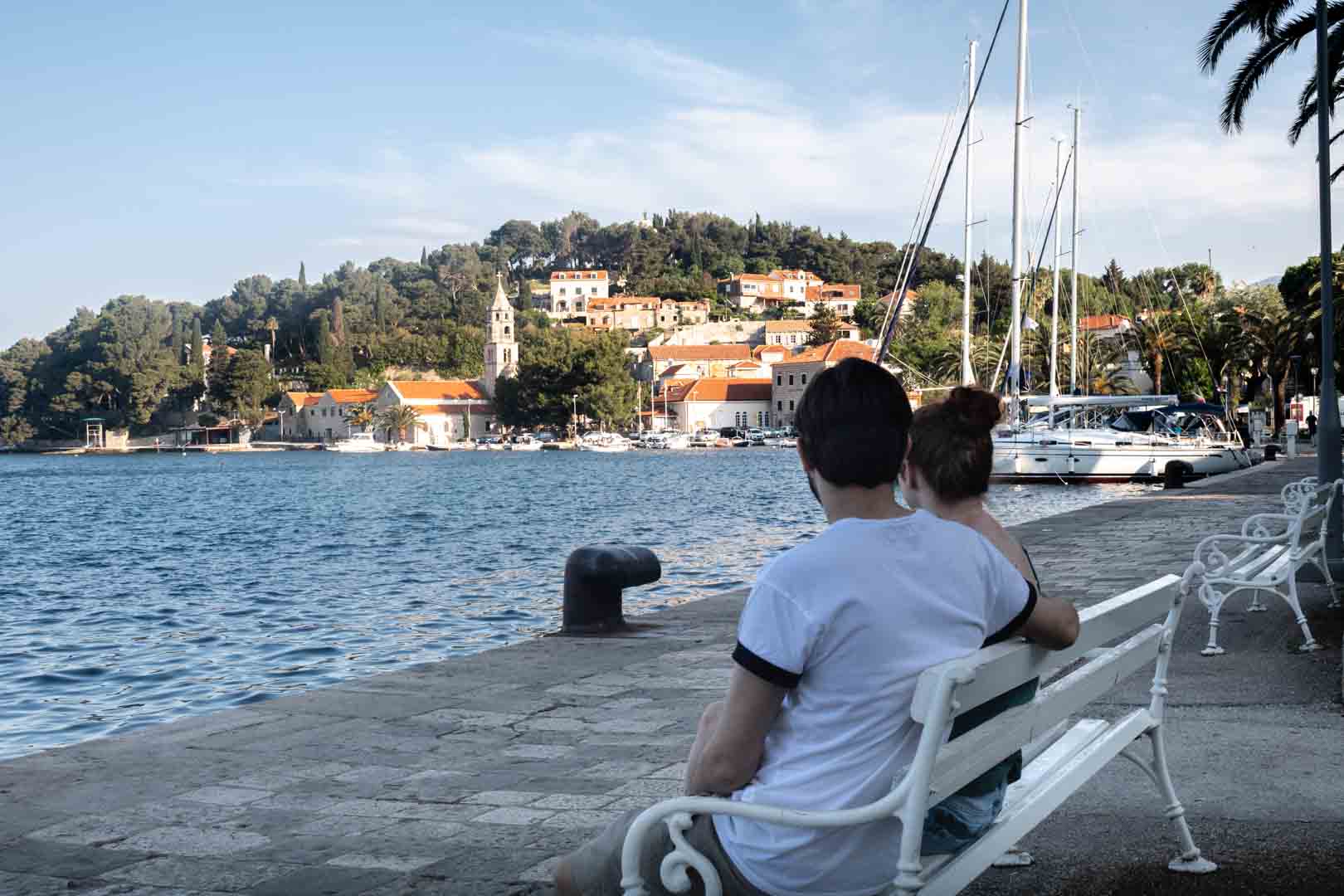The 14 Best National Parks in Asia: Where To Visit!
Last Updated: October 6 2024
If you’re travelling around Asia there are plenty of incredible places for you to visit. We absolutely love nature and looking for wildlife is one of our favourite things to do!
The national parks in Asia completely stole our hearts as they are full of wildlife, and many of them have fantastic trails that you can hike! In these parks, you’ll find a variety of species ranging from elephants to tigers so make sure you’ve got your camera ready!
Every park in this guide is a bucket list destination, so let’s take you through Asia’s best national parks. We’ll include helpful information such as how to get there and where to stay.
Some posts on this site contain affiliate links. If you buy or book something through these links, we earn a small commission, but at no extra cost to you! If you want to learn more, you can take a look at our privacy policy!
The Best National Parks in Asia
1. Ranthambore National Park, India
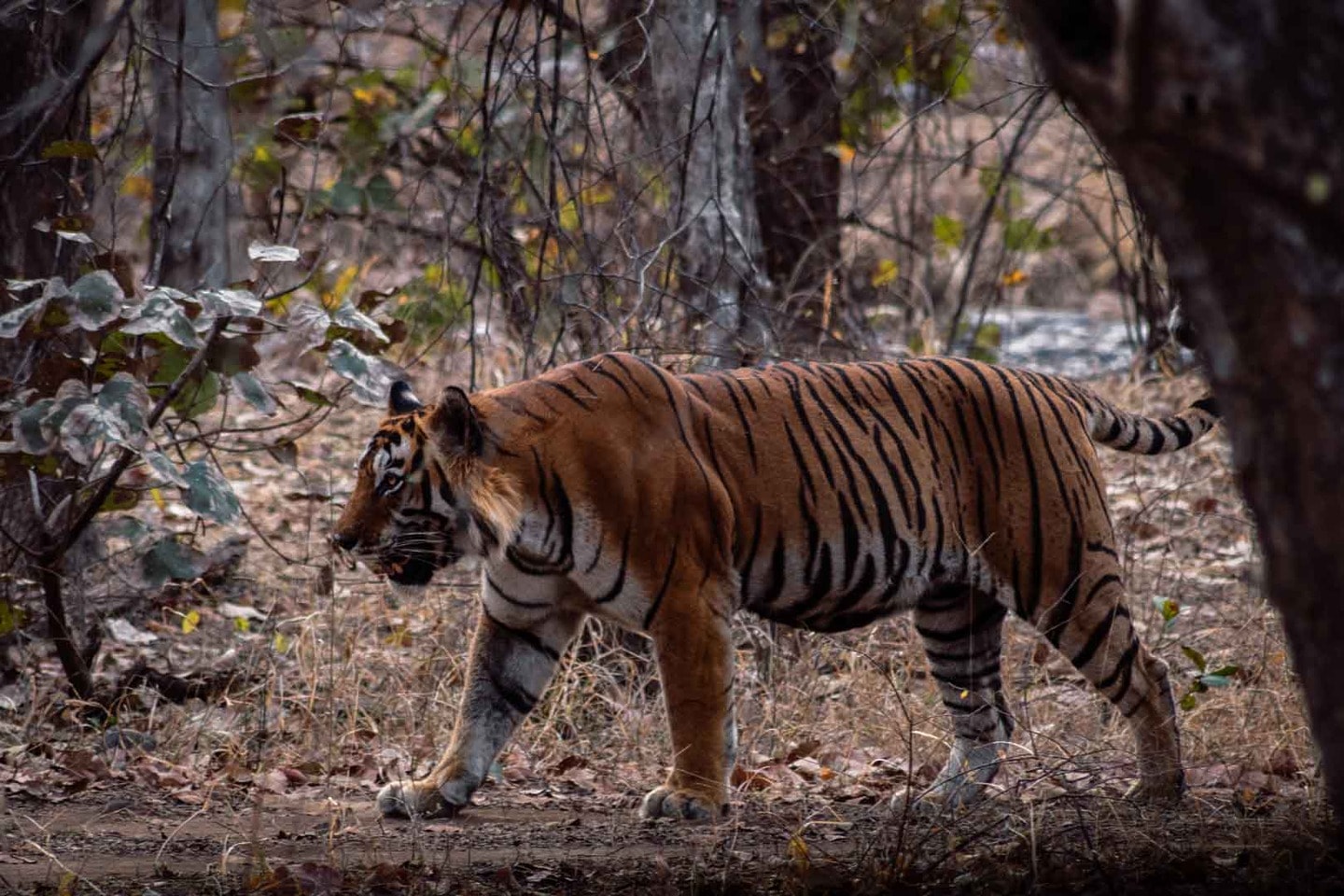
Ranthambore National Park is situated in Northern India and is one of the best places in the world to spot wild tigers. As one of the largest national parks in the state of Rajasthan, it’s home to a HUGE variety of wildlife.
Ranthambore plays an important role in terms of conservation and this has allowed the number of wild tigers to grow. It’s estimated that there are now over 80 tigers here which is a 45% growth in the past eight years.
After going on two safaris here, we were lucky enough to spot two Royal Bengal tigers, Sambar deer, vultures, and monkeys among other wildlife. You’ve also got the chance to see caracals, crocodiles, leopards, sloth bears, and striped hyenas.
Going on a tiger safari in India is an experience that should be on everyone’s Asia bucket list. However, booking them isn’t an easy task so it’s often best to book through your accommodation provider if possible.
Helpful Information for Visiting Ranthambore National Park

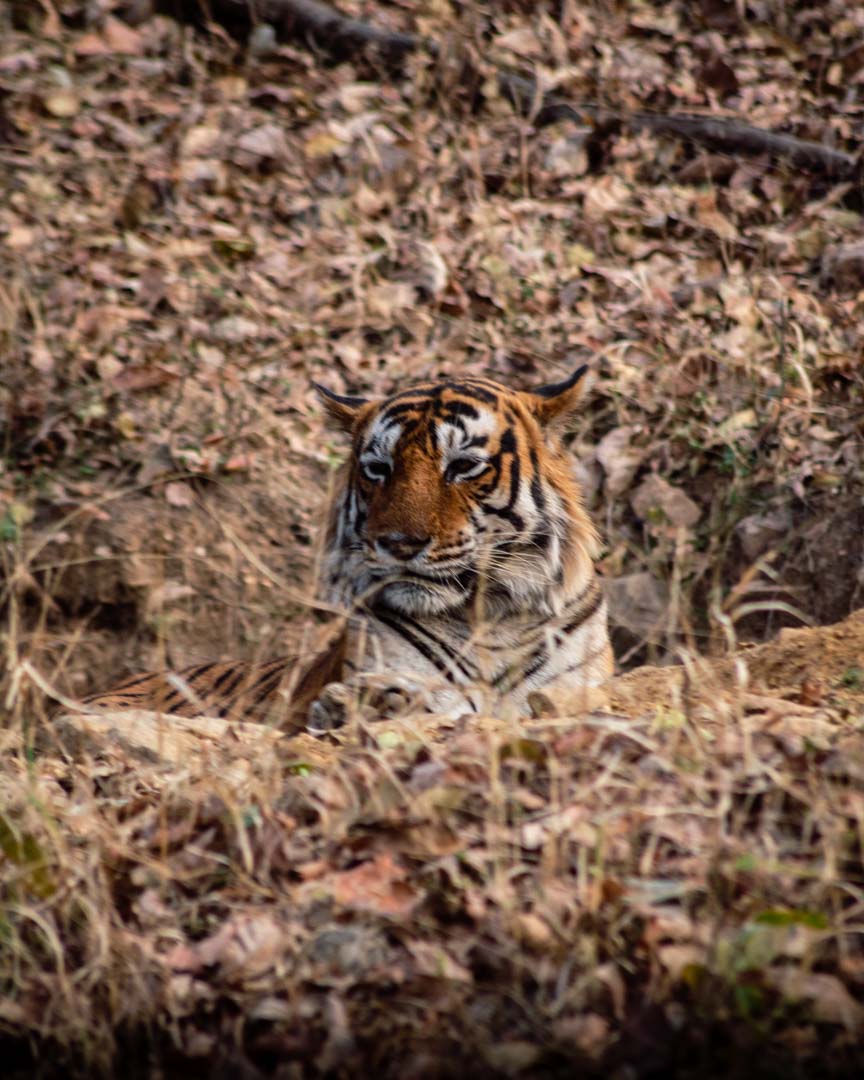
Cost: Safaris range from 1200-3700 INR (£11-£35) and depend on the vehicle and your nationality
Where to stay: Hotel Tiger Haveli
How to get there: Sawai Madhopur is the closest location and you can catch a train there from other cities in India including Agra, Jaipur, and New Delhi
Top Tips for Visiting Ranthambore National Park
- The heat is very intense in Ranthambore National Park so make sure you cover up and wear plenty of sun cream.
- There are 10 zones in Ranthambore and some are better than others for wildlife sightings!
- You’ve got the option of a gypsy safari which is a jeep or a canter which is basically a large truck. The canters tend to stay in the core zones so they’re always a good option – especially in the off-season.
2. Chitwan National Park, Nepal
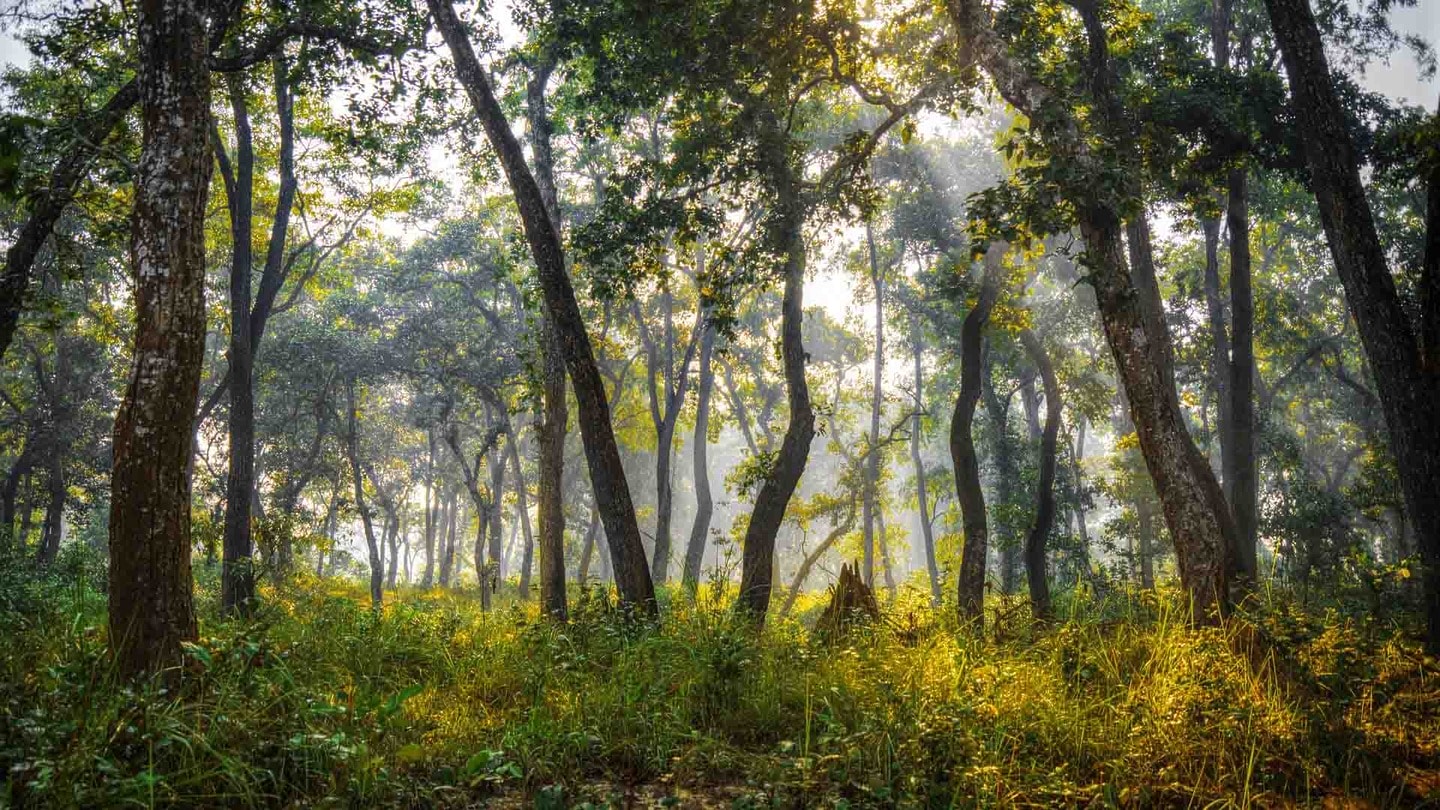
Chitwan National Park was the first national park of Nepal and was established in 1973. It’s a World Heritage Site and is located 99 miles (160 km) from the capital of Kathmandu, making it one of the country’s most accessible national parks.
Chitwan is one of only a few national parks in Asia that offers elephant safaris but this isn’t something you want to partake in, as it’s not an ethical practice.
However, there are jeep safaris available and you’ll have a great chance of spotting wildlife this way. Over 70% of the park is covered in forestry though so wildlife can be quite tricky to spot. However, if you’ve got binoculars then you’ll be ahead of the game.
Chitwan National Park is home to Nepal’s big 5; the Asian elephant, Bengal tiger, gharial crocodile, greater one-horned rhino, and the spotted leopard. You’ve also got a chance to spot several deer species, monkeys, and wild boar among other animals.
Helpful Information for Visiting Chitwan National Park
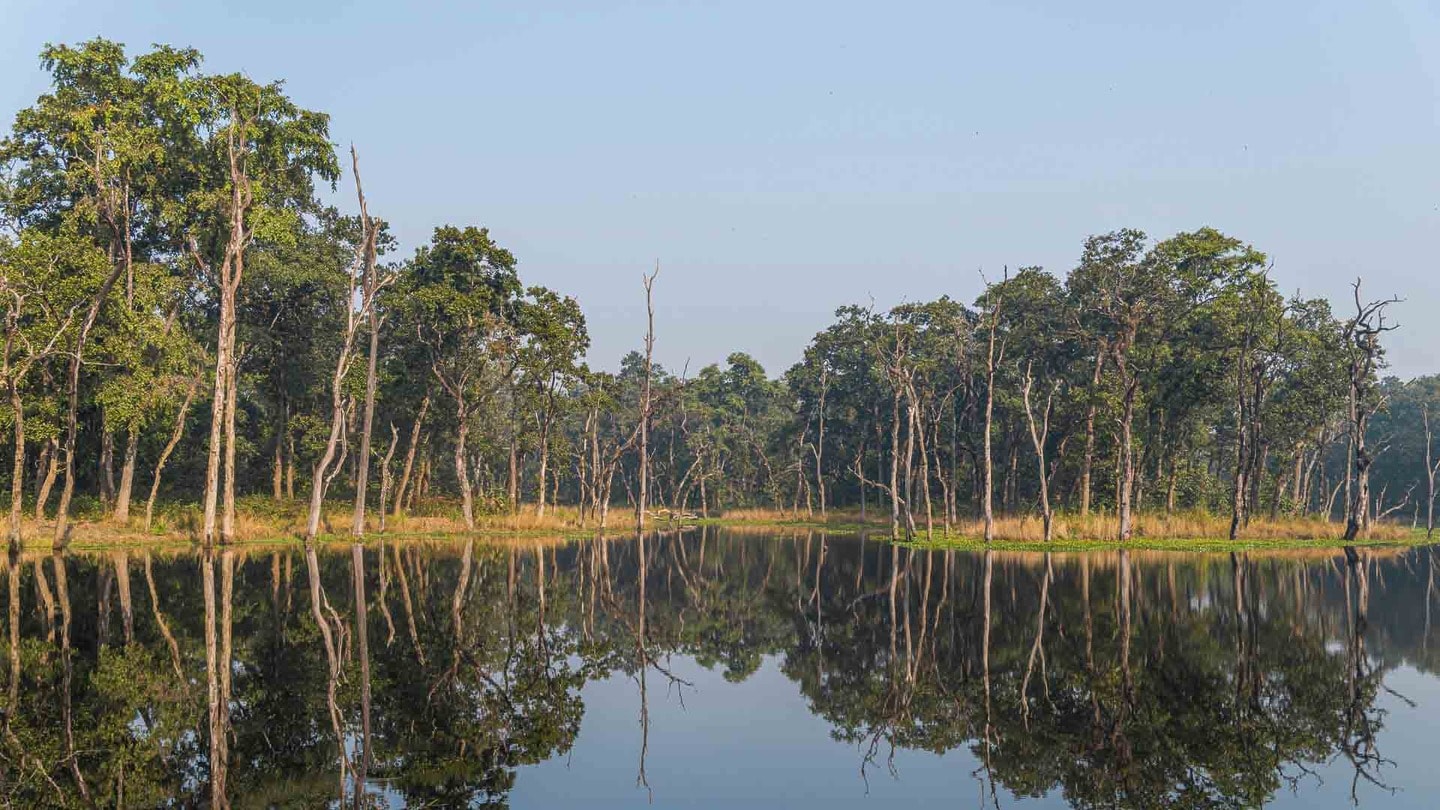
Cost: Safari prices typically start from 4,000 NPR (£24) for a half-day tour with the park permit included
Where to stay: Hotel National Park Sauraha
How to get there: Tourist buses run from major cities in Nepal including Kathmandu and Pokhara. These journeys can take over 5+ hours or you can catch a flight to the city of Bharatpur
Top Tips for Visiting Chitwan National Park
- For the best chance of spotting wildlife, you’ll want to spend a couple of days near the national park!
- Chitwan is shut to tourists between July and September because of the monsoon season so plan your trip accordingly.
- Walking safaris are also available but it’s imperative to listen to your guide closely for safety reasons.
3. Udawalawe National Park, Sri Lanka
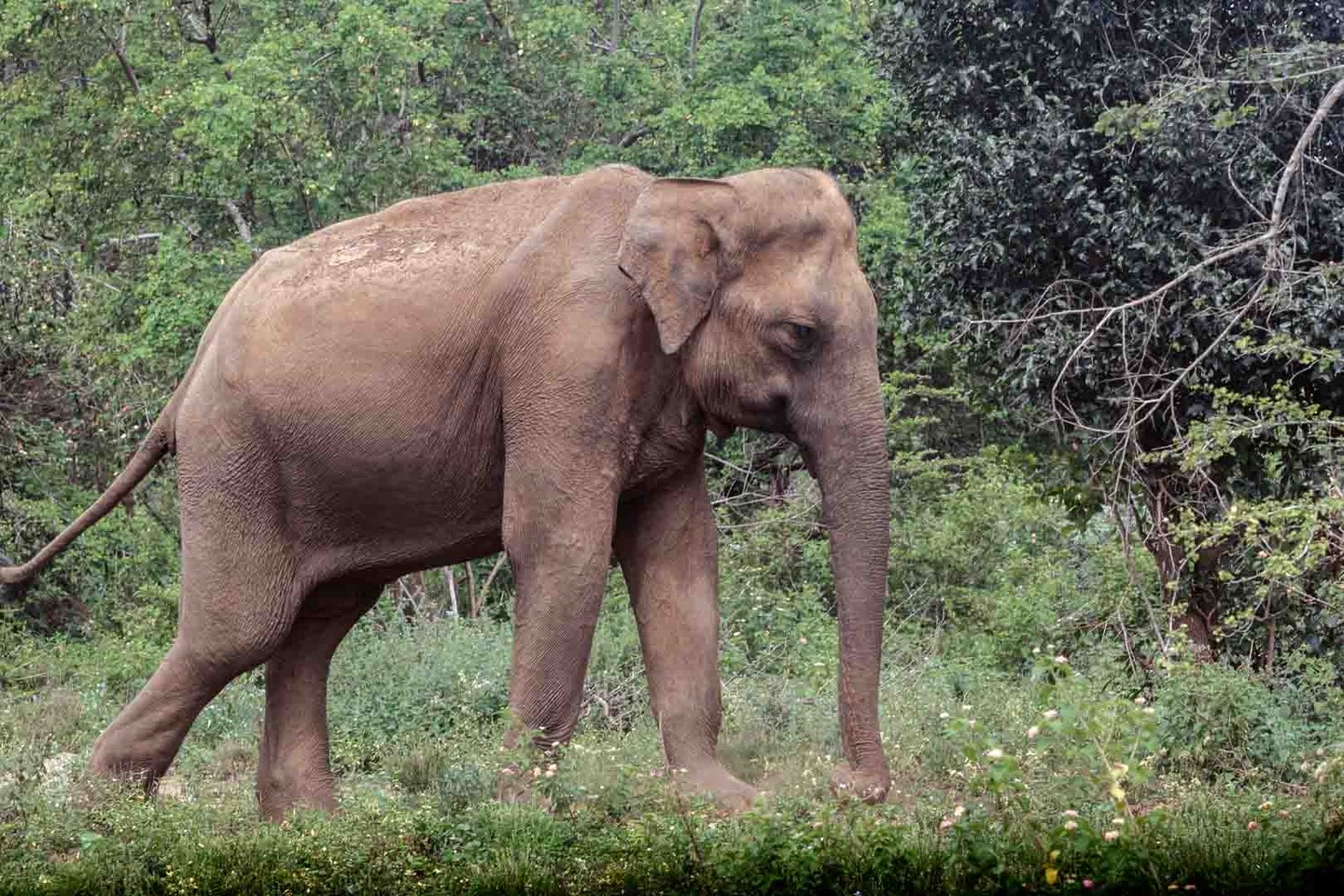
Udawalawe National Park is one of the best places in Asia to see elephants in the wild! Although it’s one of the smaller national parks in Sri Lanka it’s incredibly biodiverse.
It’s located around 111 miles (180 km) from the capital of Colombo, although the closest town is Udawalawa which is just a 15-minute drive from the main entrance.
In the end, we only did one safari in this national park but it’s still one of our best to date! On our 5-hour safari, we got to spot around 15 elephants, crocodiles, monkeys, wild boars, and a jackal so we were really lucky!
There’s plenty of other wildlife you can see in Udawalawe National Park too, including leopards, water buffalo, sambar deer, and chital. You’ll also find lots of birdlife here including eagles and owls, making it a great place for a Sri Lanka safari. There are both morning and afternoon slots available.
Helpful Information for Visiting Udawalawe National Park
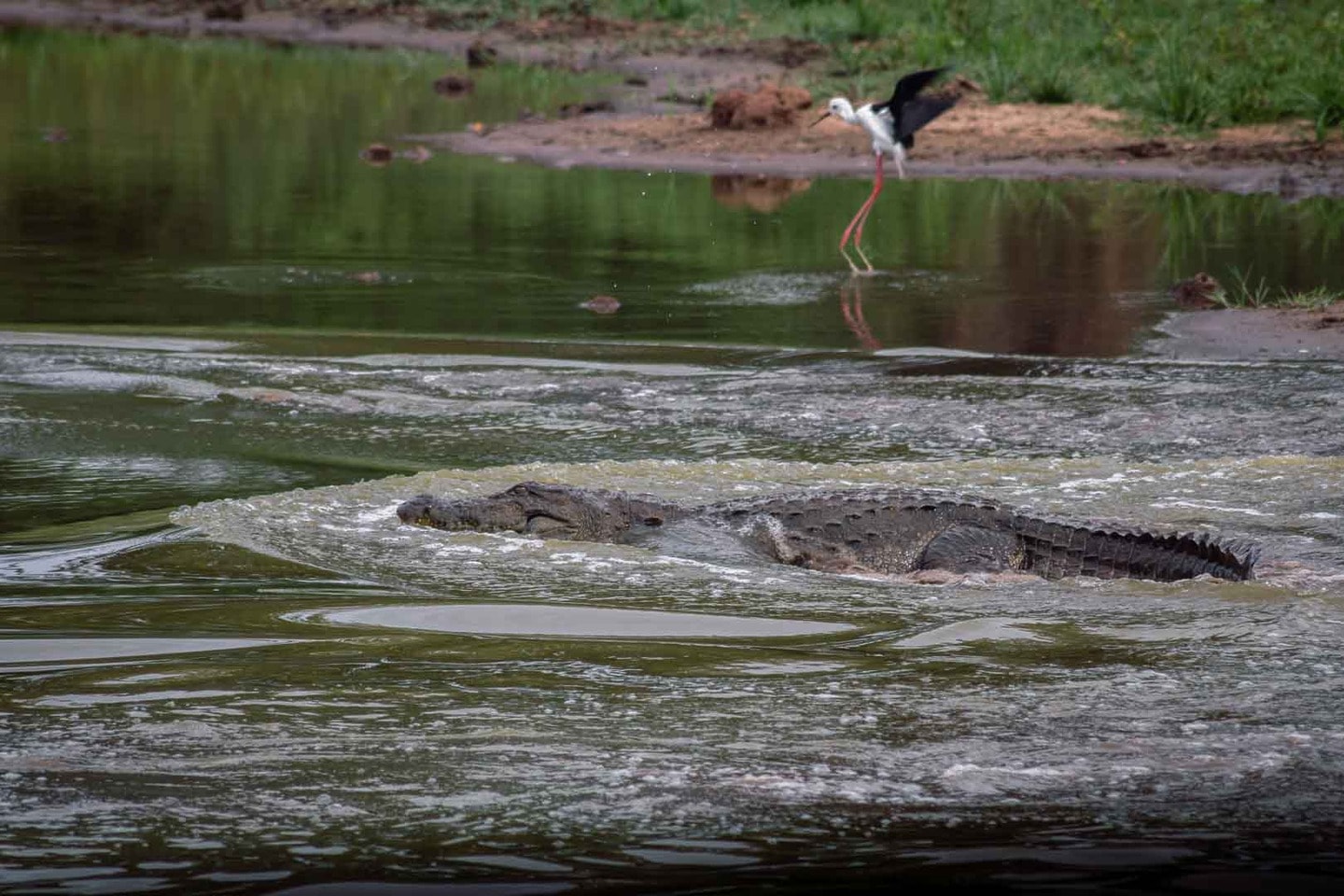
Cost: Safari prices start from 22,000 LKR (£54) and typically include entrance fees and taxes
Where to stay: Jungle Paradise
How to get there: Public buses run to Udawalawa which is where the national park is located. Tickets are very cheap and there are several routes but the journey will take several hours
Top Tips for Visiting Udawalawe National Park
- Be quiet when the jeeps are parked up as you’ve got a better chance of the wildlife getting close.
- If you’re staying in Udawalawa whilst visiting the park then keep your eyes peeled as you travel around as you’ve got a great chance of seeing wildlife outside of the park.
- Opt for a private safari if you can as you’ll be able to move around the jeep to get the best views!
4. Khao Sok National Park, Thailand
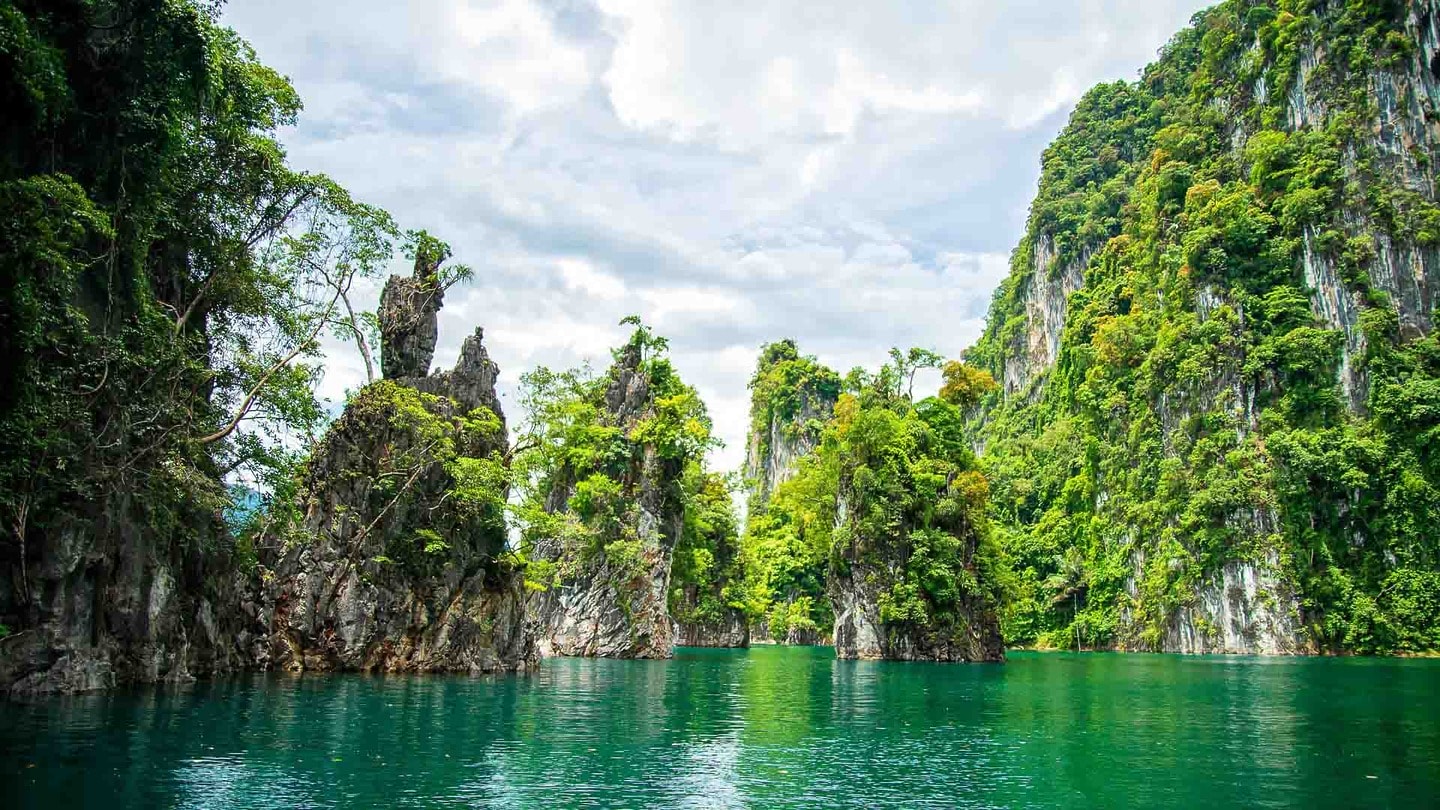
You’ll find plenty of incredible national parks in Asia but you don’t want to miss out on visiting Khao Sok! It’s one of the top national parks in Thailand for wildlife watching so has a lot to offer.
Khao Sok is located around 78 miles (126 km) from Phuket and is known for its striking limestone formations, floating raft houses, and variety of wildlife. It’s also home to one of the oldest evergreen rainforests in the world.
Offering lush jungle, spectacular lakes, and unique cave systems, Khao Sok has a lot to offer nature lovers! However, the main reason people visit is the wildlife and there’s plenty to see.
For starters, Khao Sok National Park is home to four large carnivores; the leopard, clouded leopard, Malayan Sun Bear, and tiger making the area incredibly biodiverse. If you’re lucky, you might also get to spot elephants, tapirs, gibbons, and gaur – this makes it one of the best places to spot wildlife in Thailand!
Helpful Information for Visiting Khao Sok National Park

Cost: Day tours (such as jungle hikes and canoe tours) typically start from 600 THB (£13)
Where to stay: Khaosok Good View Resort – SHA PLUS
How to get there: You can catch a minibus from Koh Lak, Krabi, Phuket, or Surat Thani. That’s the most efficient way as Koh Sok isn’t the easiest of parks to get to!
Top Tips for Visiting Khao Sok National Park
- For the best experience, you’ll want to spend at least 2-3 days in Khao Sok. This gives you more time to spot wildlife and try out some of the awesome activities that are available here.
- If you’ve got the time then spend a few nights in a floating bungalow!
- Due to the climate in Khao Sok National Park, you can expect rain at any time of year so make sure you pack a poncho or rain jacket.
5. Kinabatangan Wildlife Sanctuary, Borneo
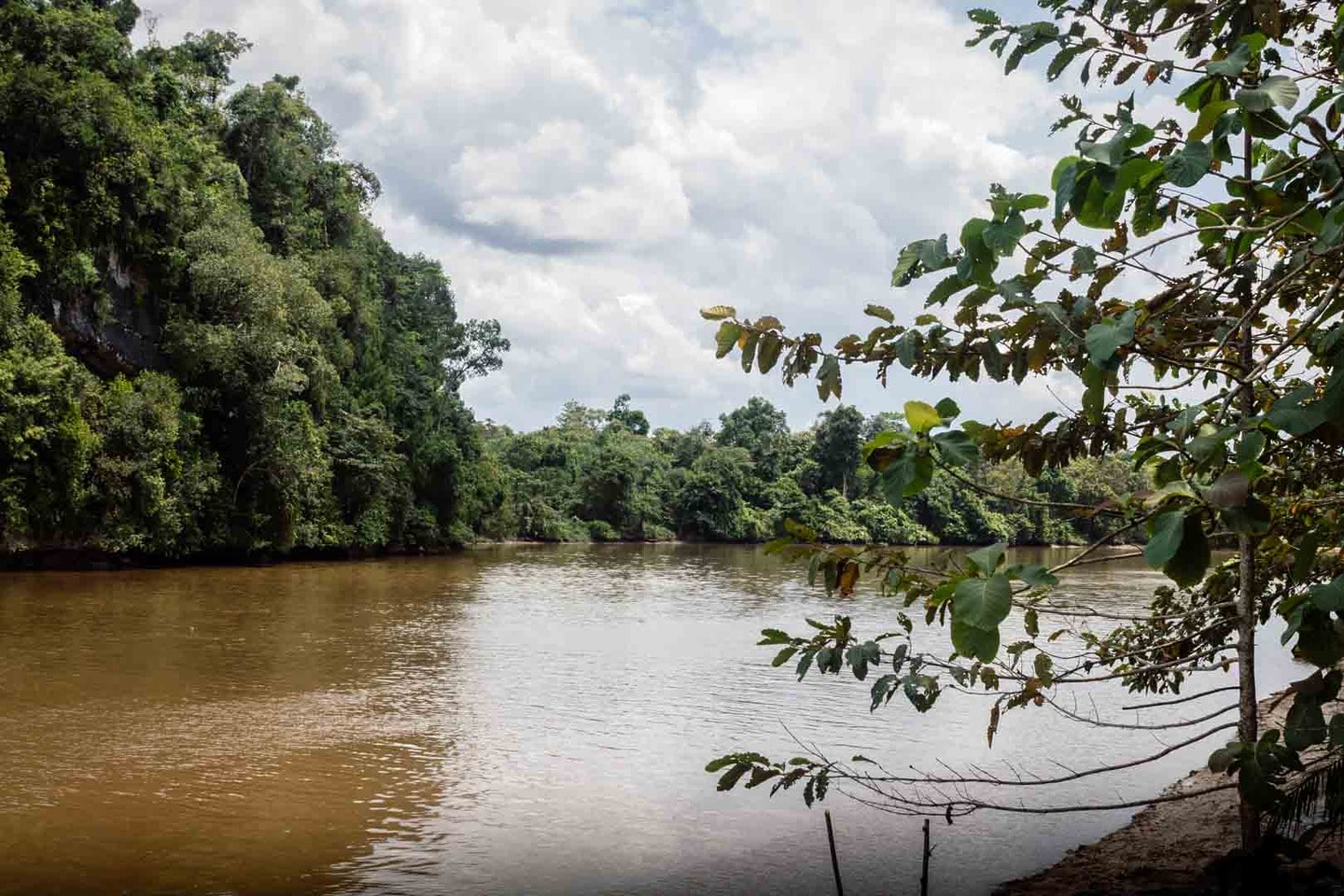
The Kinabatangan River is undoubtedly one of our favourite places in the world. It’s the second-longest river in Malaysia covering an impressive distance of 560 km (348 miles).
Flowing through a diverse range of habitats from lowland mangroves to floodplain forests, this area is incredibly diverse. The best place to base yourself is Sukau as from here, you can head out on river cruises to spot wildlife (as well as jungle treks).
On these tours, you can spot a variety of animals including pygmy elephants, proboscis monkeys, crocodiles, and other species of monkeys, among others. It was here, that we fulfilled our lifelong dream of seeing orangutans in the wild too, which is what draws many people to Kinabatangan.
Visiting this river is one of the top things to do in Borneo, especially as you can wake up to the sounds of gibbons every morning. What more could you ask for?
Helpful Information for Visiting the Kinabatangan River
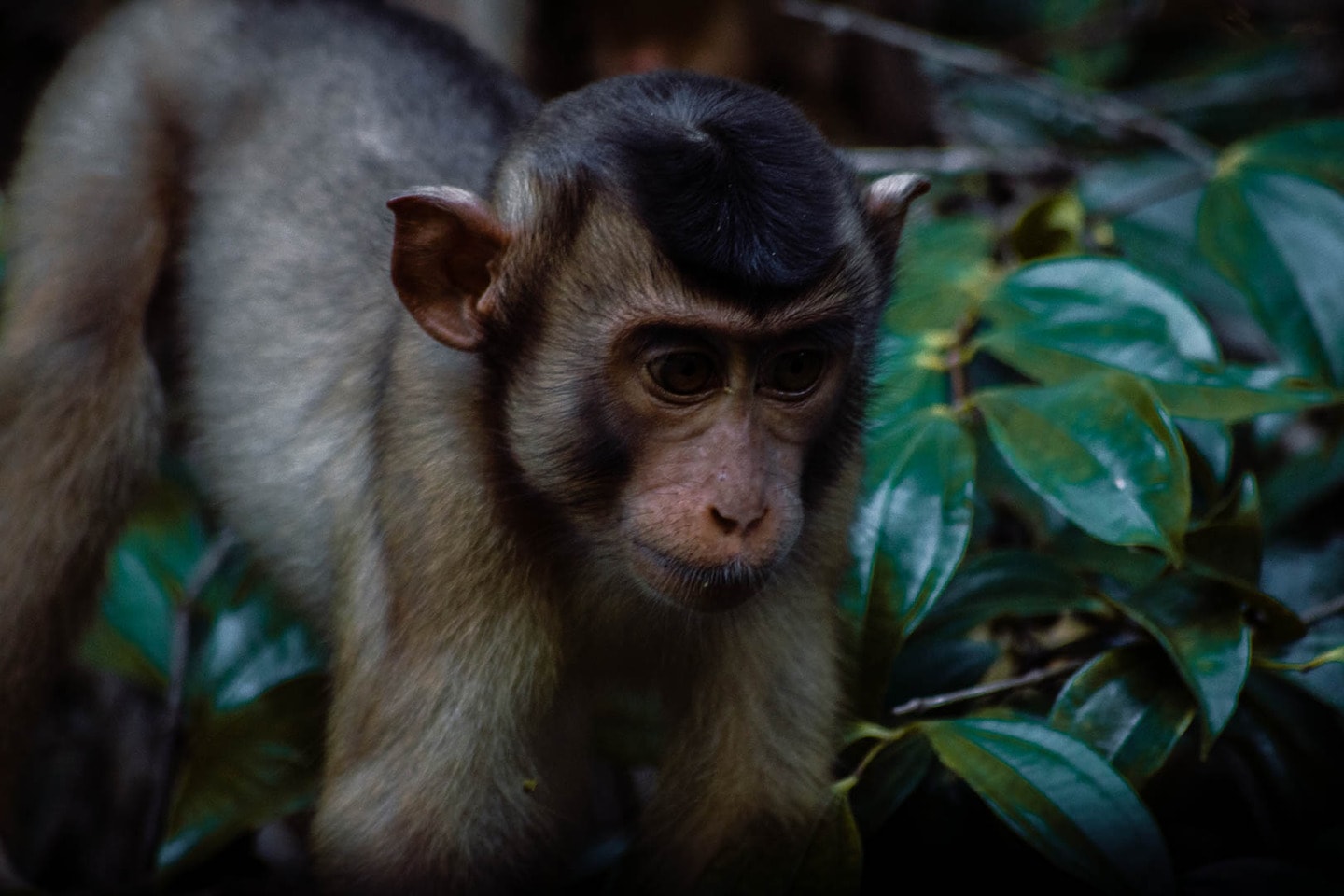
Cost: Short river cruises typically start from 60 MYR (£10) although this may have increased now!
Where to stay: Sukau Backpackers B&B
How to get there: The best way to reach Sukau is by taking a public bus from the likes of Kota Kinabalu to Sandakan. From there, you can catch a private shuttle or a direct transfer to your lodge
Top Tips for Visiting the Kinabatangan River
- Sukau is incredibly remote so you won’t find many options when it comes to shops. For this reason, stock up on any items you may need in Kota Kinabalu before you travel.
- For the best experience, head out on a couple of river cruises. Going on several cruises increases your chances of spotting wildlife, especially the more elusive creatures like the orangutan.
- If you’re on a budget you can avoid the package deals and just pay for a room. Many properties like Sukau Backpackers B&B (which is where we stayed) offer river cruises and other guided excursions so you can just pay for them separately.
6. Cat Tien National Park, Vietnam
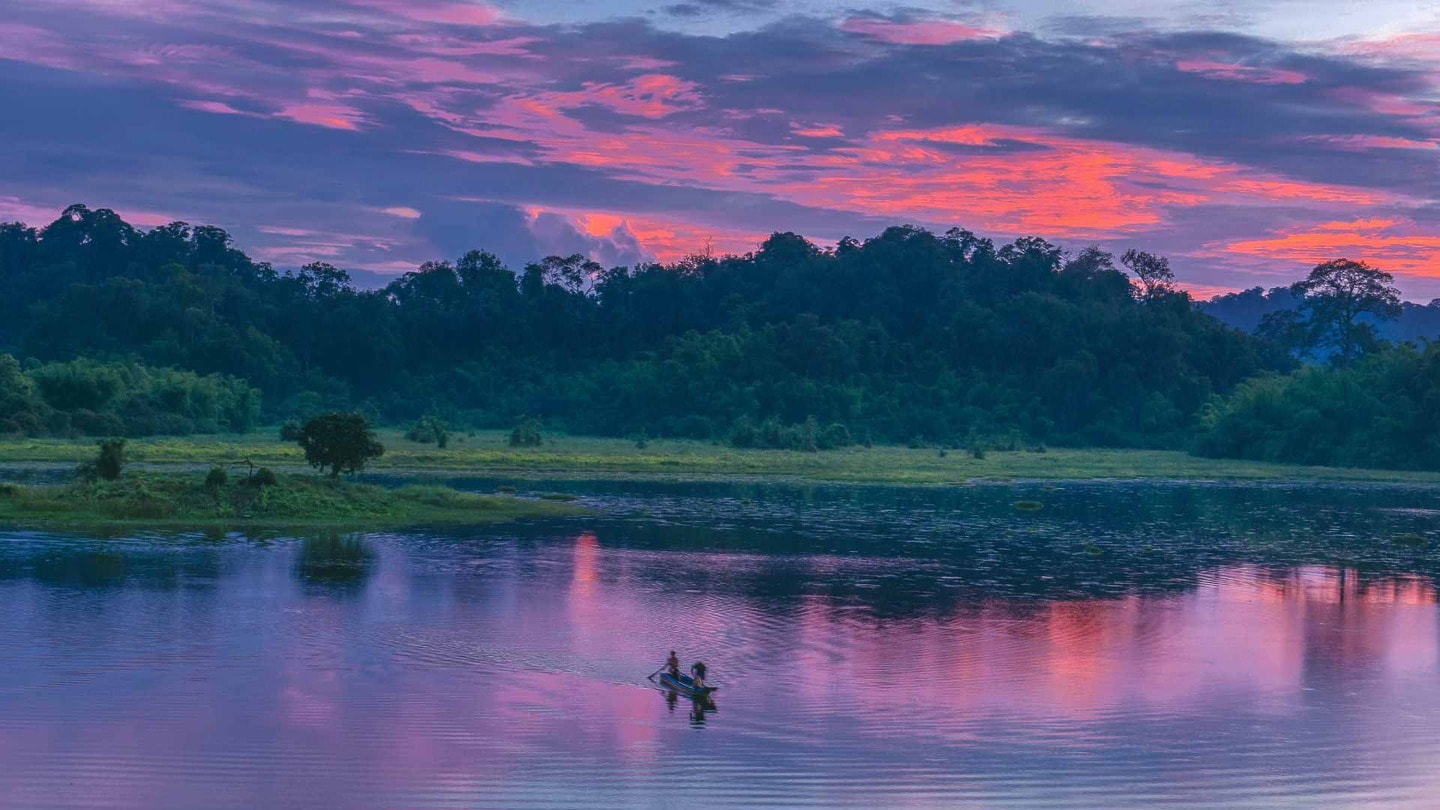
The country of Vietnam is on many people’s bucket lists as it’s known for its pristine beaches, delicious food, and diverse landscapes. It’s also home to one of the best national parks in Southeast Asia, Cat Tien National Park.
Covering an impressive 720 sq km (278 sq miles), Cat Tien is one of Vietnam’s largest nature reserves. Originally, it was split into three separate parks (Cát Tiên, Tay Cát Tiên and Cat Loc), but they were later merged to help species breed, especially the Javan Rhinoceros.
There are tons of other fascinating species to be found here too. These include Asian elephants, clouded leopards, sun bears, gibbons, and langurs. There’s also plenty of birdlife to be spotted, with species including the painted stork, great hornbill, and several types of eagle.
There are a couple of different ways to explore the national park. By boat is one of the most popular, but there are some fantastic hiking trails too!
Helpful Information For Visiting Cat Tien National Park
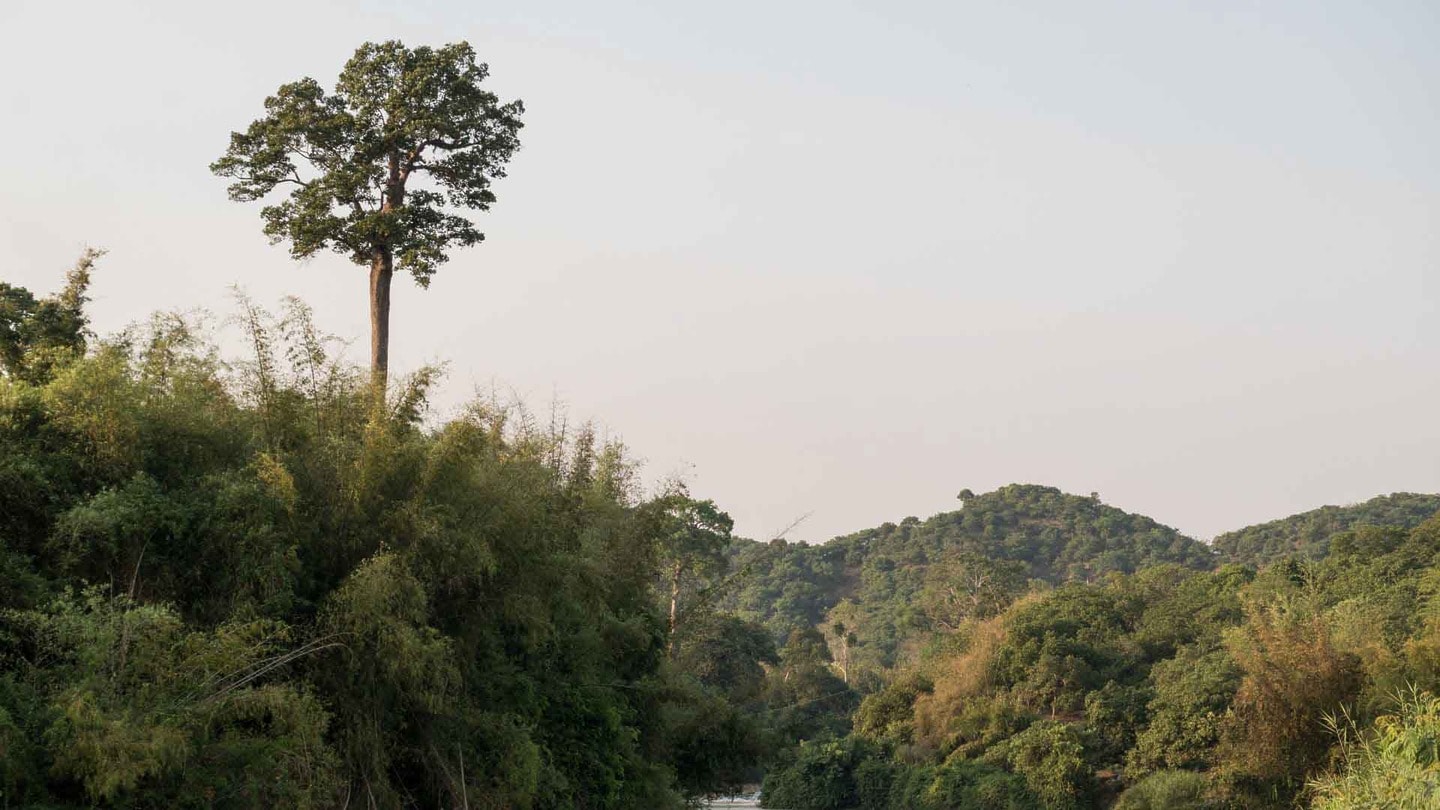
Cost: The entrance fee is 60,000 VND (£1.90) but any extra activities will include additional charges
Where to stay: Thuy Tien Ecolodge
How to get there: Direct buses run from Ho Chi Minh to Cat Tien daily, and the journey takes around 4-5 hours. You can also catch a bus from Dalat which takes around 3.5 hours
Top Tips for Visiting Cat Tien National Park
- To protect the national park and its wildlife, visitor numbers are limited so you’ll need to book your visit in advance. So if you’re planning to go on a tour, just consider this as spaces may be sold out.
- For the best experience, try to spend at least two days in Cat Tien National Park.
- Several local communities live in Cat Tien including the Chau Ma and Stieng people. You can actually visit these communities on a day trip which will give you a unique insight into the area.
7. Gunung Leuser National Park, Sumatra
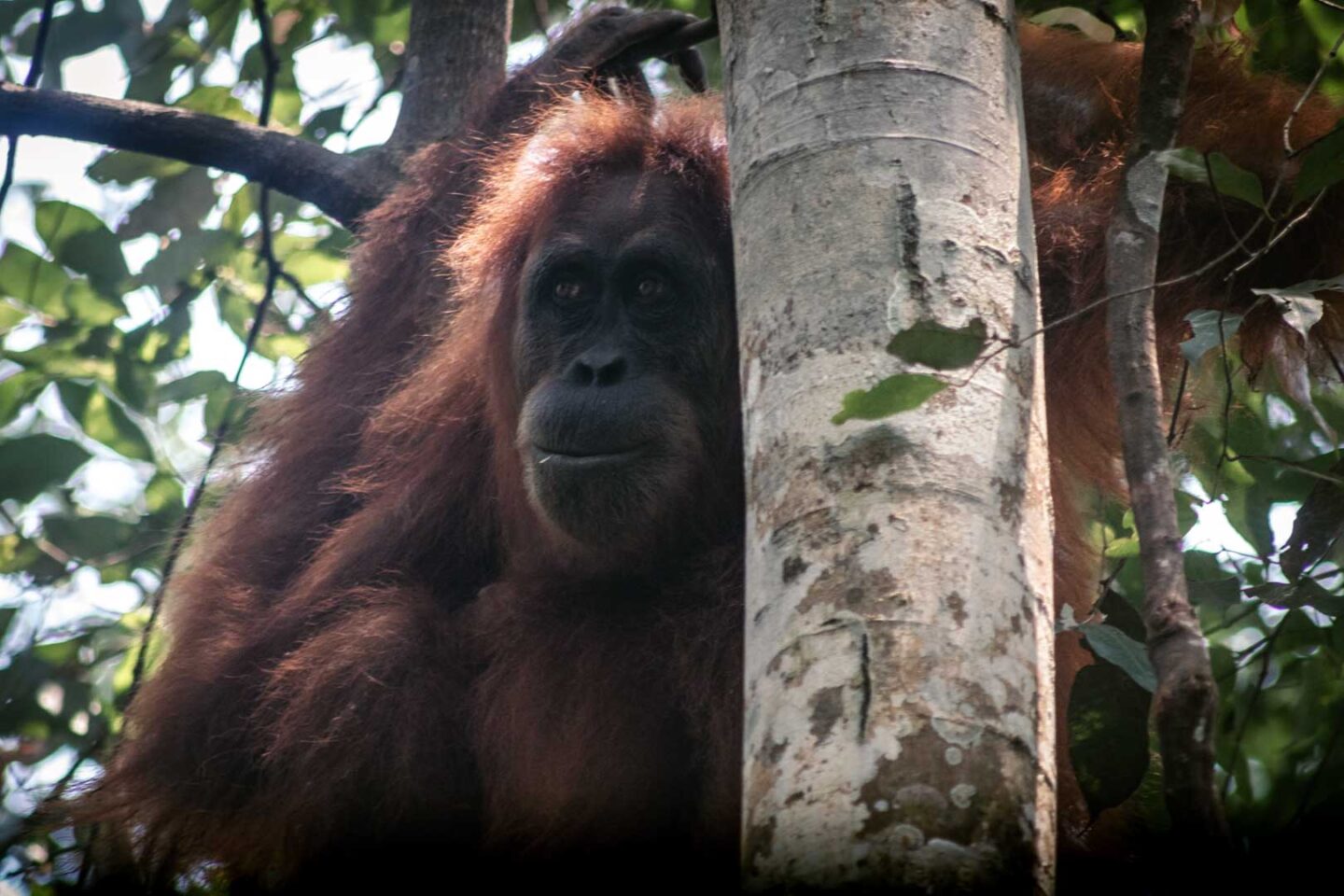
Gunung Leuser is one of the best national parks in Asia so make sure you add this place to your bucket list. It’s the second-largest park in Sumatra, covering around 1 million hectares and it’s very biodiverse.
Gunung Leuser is one of the richest tropical rainforests in Southeast Asia and is home to a wide variety of wildlife. Not only is it one of the last places in the world where you can spot Sumatran orangutans, but you can also see elephants, rhinoceros, tigers, sun bears, gibbons, and Thomas leaf monkeys here.
Now, there aren’t jeeps waiting to take you around and you won’t be heading out on a river cruise either. Instead, you’ll be trekking through the rainforest so you’re in for a truly wild experience.
It’s mandatory to have a guide with you in Gunung Leuser National Park and you can either head out for a day hike or a multi-day hike. River tubing is another popular activity in the park!
Helpful Information For Visiting Gunung Leuser National Park

Cost: Day hikes start from 782,000 IDR (£39) with multi-day hikes costing significantly more
Where to stay: Garden Inn
How to get there: To reach Bukit Lawang from Medan, Berastagi, or Lake Toba, you can take a shared taxi or tourist bus. Local buses are much cheaper but they don’t offer as much convenience
Top Tips for Visiting Gunung Leuser National Park
- You’ll likely come across ground leeches while trekking in the national park. As such, we’d recommend wearing long trousers and tucking them into your socks to avoid getting leeched!
- The humidity in Gunung Lesuer is intense so pack light cotton clothing (and a rainjacket of course).
- When budgeting for your trip, be aware that you need to pay a daily entrance fee. This isn’t so much of an issue for a day hike, but it’s something to consider when planning a multi-day trip.
8. Yala National Park, Sri Lanka

There are plenty of fantastic places to visit in Sri Lanka and Yala National Park is one of them. Thanks to its variety of wildlife, Yala is the country’s most visited reserve and it’s not hard to see why!
Although Yala covers an impressive area of 1260 sq km (486 sq miles), the majority of the park is a strict nature reserve and as such, is closed to visitors. However, the portion that you can visit has a lot to offer.
Yala National Park is most famous for its leopard sightings, with it being one of the best places in the world for spotting these creatures. However, you can also spot plenty of other wildlife here too. These include Sri Lankan elephants, sloth bears, crocodiles, jackals, and water buffalo.
The Jeep safaris are the most popular way to explore the park. There are both morning and afternoon safaris on offer, and these typically last between 3-4 hours.
Helpful Information For Visiting Yala National Park
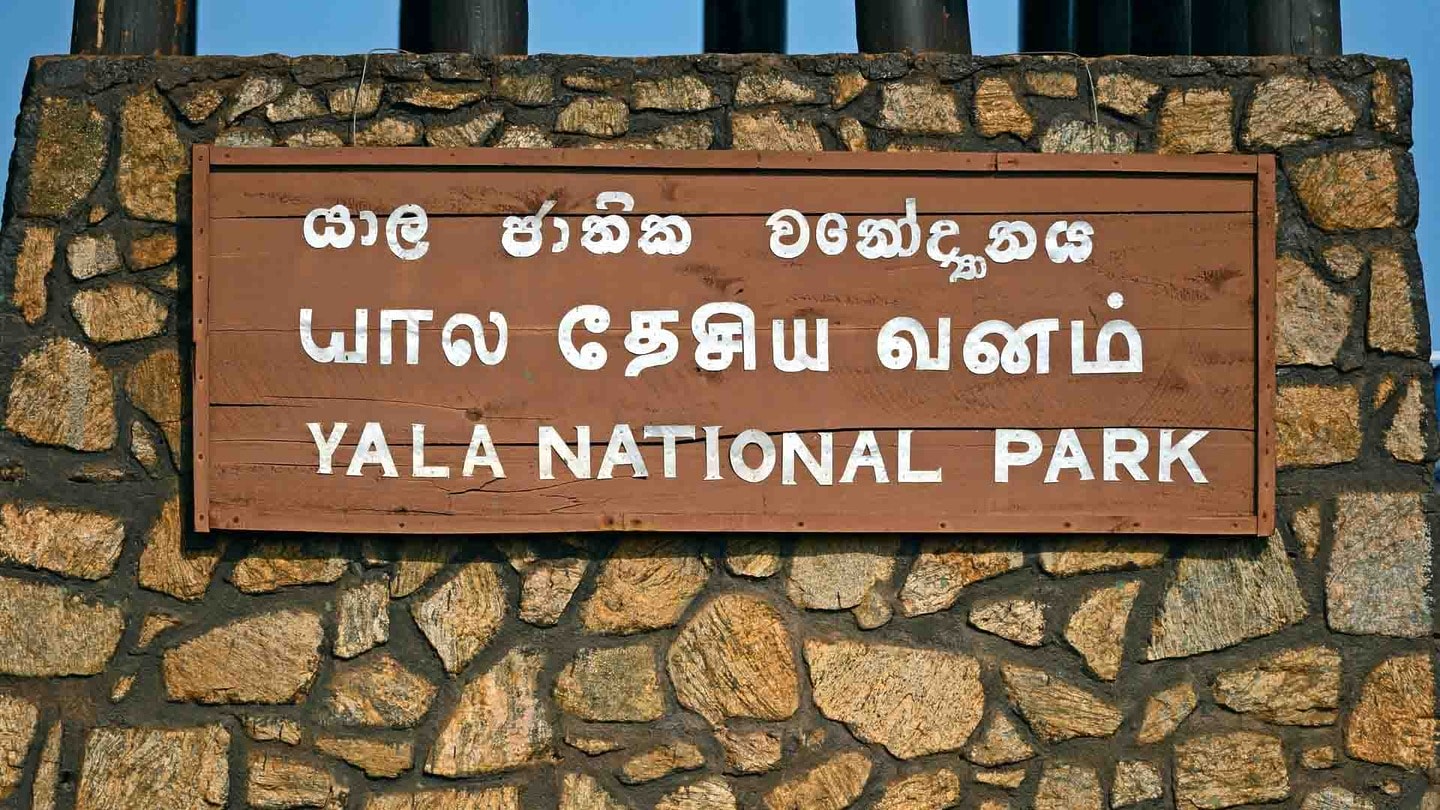
Cost: Prices start from 14,000 LKR (£35) for a half-day safari and 24,000 LKR (£59) for a full-day safari
Where to stay: Safari Lodge Yala
How to get there: You’ll first want to reach Tissamaharama town by bus, either from Ella or the South Coast. Tickets are very affordable, or you can choose a safari package that includes transfers
Top Tips for Visiting Yala National Park
- Visiting between January and July offers the best chance of spotting leopards. Yala offers far more leopard sightings than any other national park in Sri Lanka so keep your eyes peeled.
- Wear plenty of sunscreen as the sun will make its way into the jeep throughout the day.
- It’s important to remember that there are no toilets in Yala National Park. Make sure you go before you head out for your safari, as there are very few places the jeeps can legally stop.
9. Taman Negara National Park, Malaysia

Taman Negara is undoubtedly one of the best places to visit in Malaysia. At 130 million years old, it’s one of the world’s oldest tropical rainforests and it’s teeming with life.
This national park is one of the best places in Malaysia for hiking, as there are tons of trails. We headed out on a couple ourselves, but it’s also possible to head out on a guided hike. The latter may be more suitable for those who don’t have much experience exploring the wilderness!
Taman Negara is home to plenty of wildlife including over 200 species of mammal. This includes elephants, tigers, Sumatran rhinoceros, tapirs, sun bears, and clouded leopards.
We based ourselves in Kuala Tahan, which offers plenty of amenities including accommodation and restaurants. Taman Negara National Park is located directly opposite and is accessible by boat. These boats run frequently and take just a few minutes.
Helpful Information For Visiting Taman Negara National Park
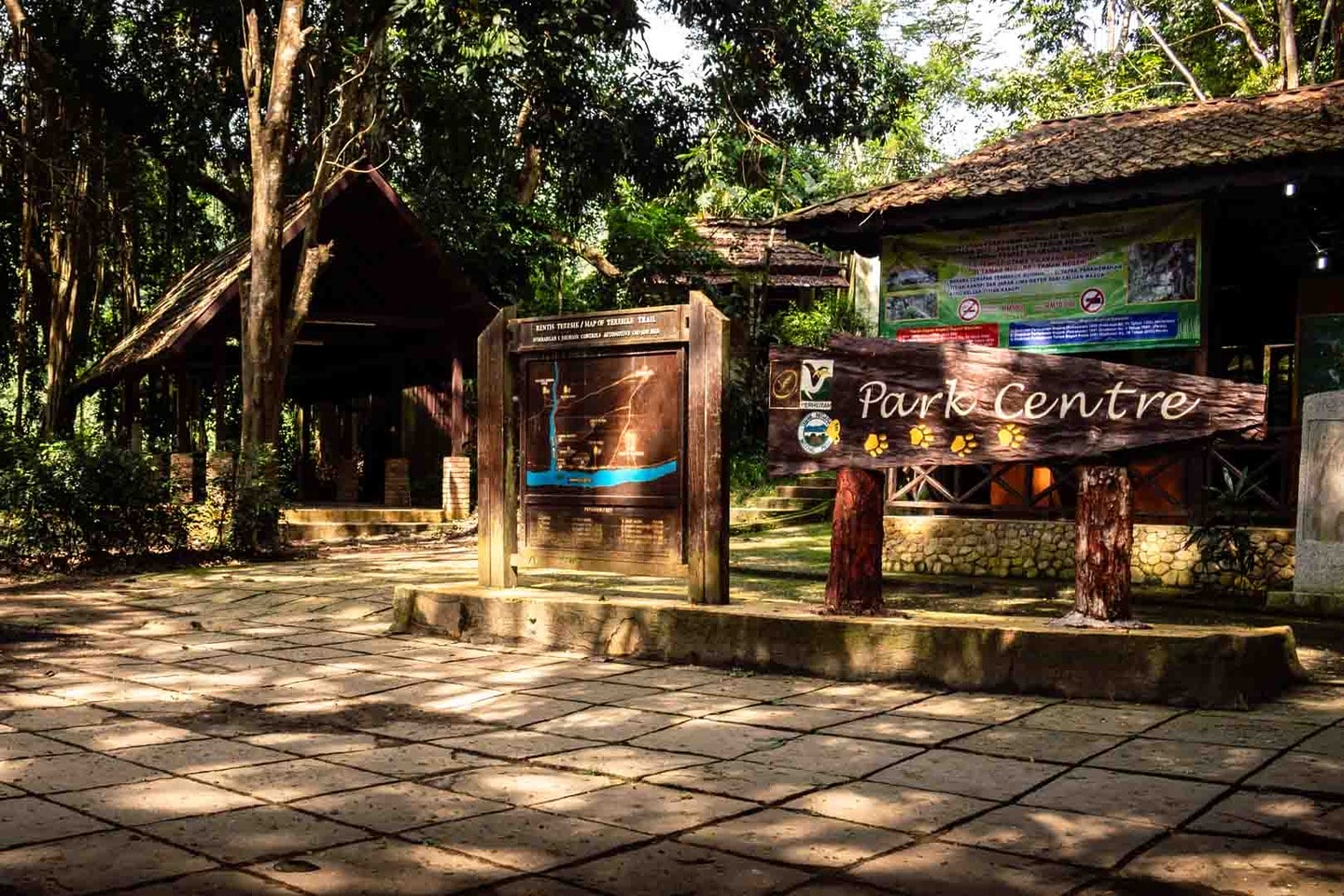
Cost: The entrance fee is 1 MYR (£0.18) and you’ll also need to pay for a camera permit (if you have one).
Where to stay: Tahan Guest House
How to get there: You can travel to Taman Negara from both Kuala Lumpur and the Cameron Highlands. It’s possible to travel by bus and minibus, and then you can catch a boat from Jerantut
Top Tips For Visiting Taman Negara National Park
- You’ll want to get up early to spot wildlife in Taman Negara as this is when they are most active. For the best experience, we recommend heading to one of the hides as these offer the best chance.
- Bring along plenty of mosquito repellant as you’ll certainly need it!
- As with any rainforest, the weather in Taman Negara can be very unpredictable. You can encounter some serious downpours and tropical thunderstorms here so pack a rainjacket.
10. Komodo National Park, Indonesia

Komodo National Park is located within the Lesser Sunda Islands in Indonesia. Established in 1980, this national park is one of the greatest wonders and is known for its rich marine biodiversity.
Komodo National Park is most famous for being home to the Komodo dragon, the largest lizard in the world. These creatures can grow up to 3 meters (10 feet) long and weigh over 140 kg (300 lbs) so it’s literally like meeting a dinosaur in real life!
The only way to see these creatures in the wild is by heading on an organised tour. You’ll have a guide with you at all times and you’ll hike across the islands (Komodo and Rinca) to catch a glimpse of these dragons.
Snorkelling and diving are also very popular here, with the surrounding ocean being home to a vast amount of life. This includes sharks, sea turtles, dolphins, whales, manta rays, and tropical fish!
Helpful Information For Visiting Komodo National Park
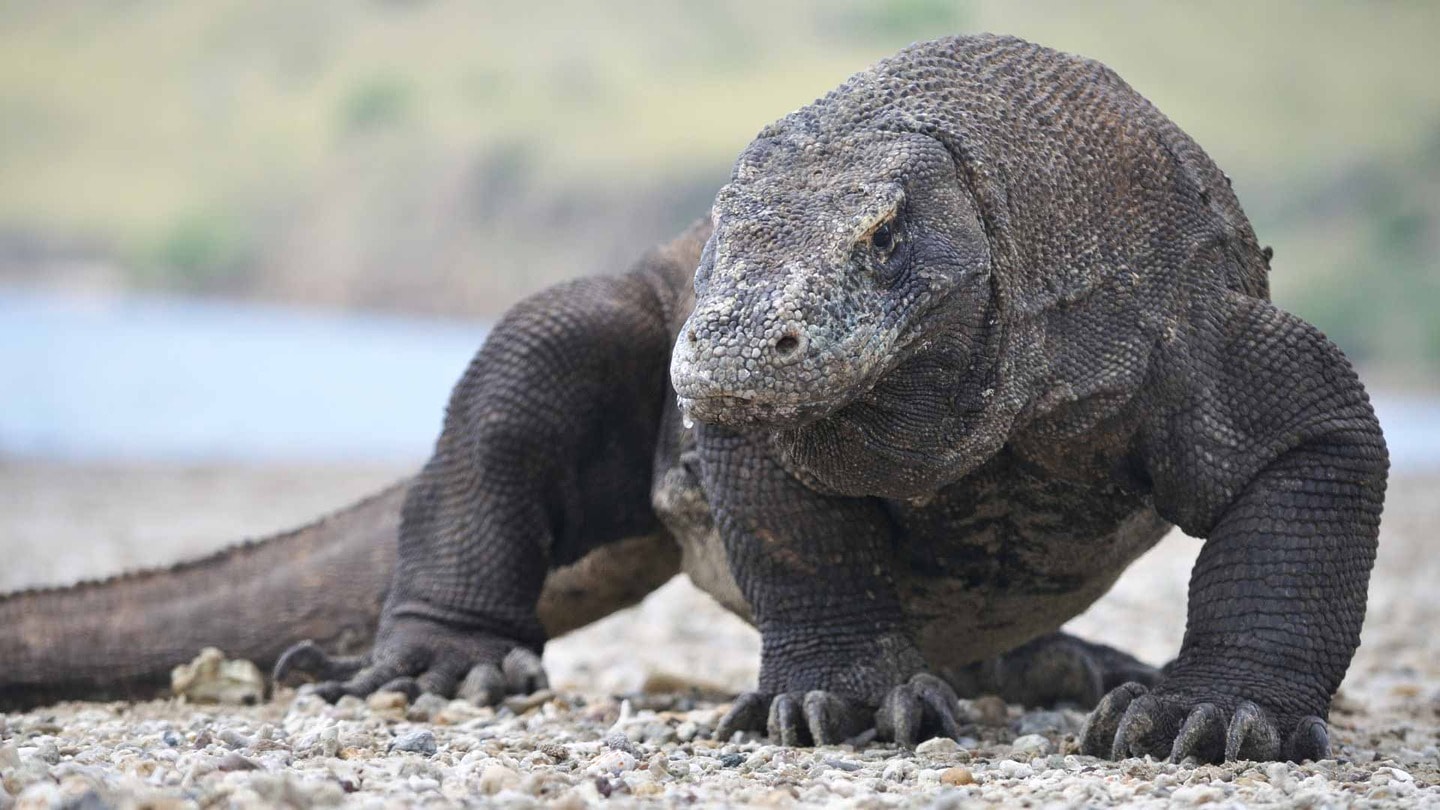
Cost: Day tours typically start from 1.4 million IDR (£72) with overnight trips being considerably more
Where to stay: Komodo is a protected island so you can’t stay here, but overnight boat trips are popular
How to get there: You’ll typically fly into Labuan Bajo which is located on the island of Flores. From there, you can head out on boat tours of Komodo National Park, as well as other activities.
Top Tips For Visiting Komodo National Park
- It’s important to keep your distance from the Komodo dragons as you’re hiking around the park. These creatures are known to be aggressive and they can move very quickly, especially if disturbed.
- The best time to visit this national park is in the dry season which falls between April to December.
- For unforgettable views, you can also opt for a tour that includes a hike on Padar Island. From the island’s peak, the views are spectacular so make sure you have your camera on hand!
11. Bako National Park, Borneo
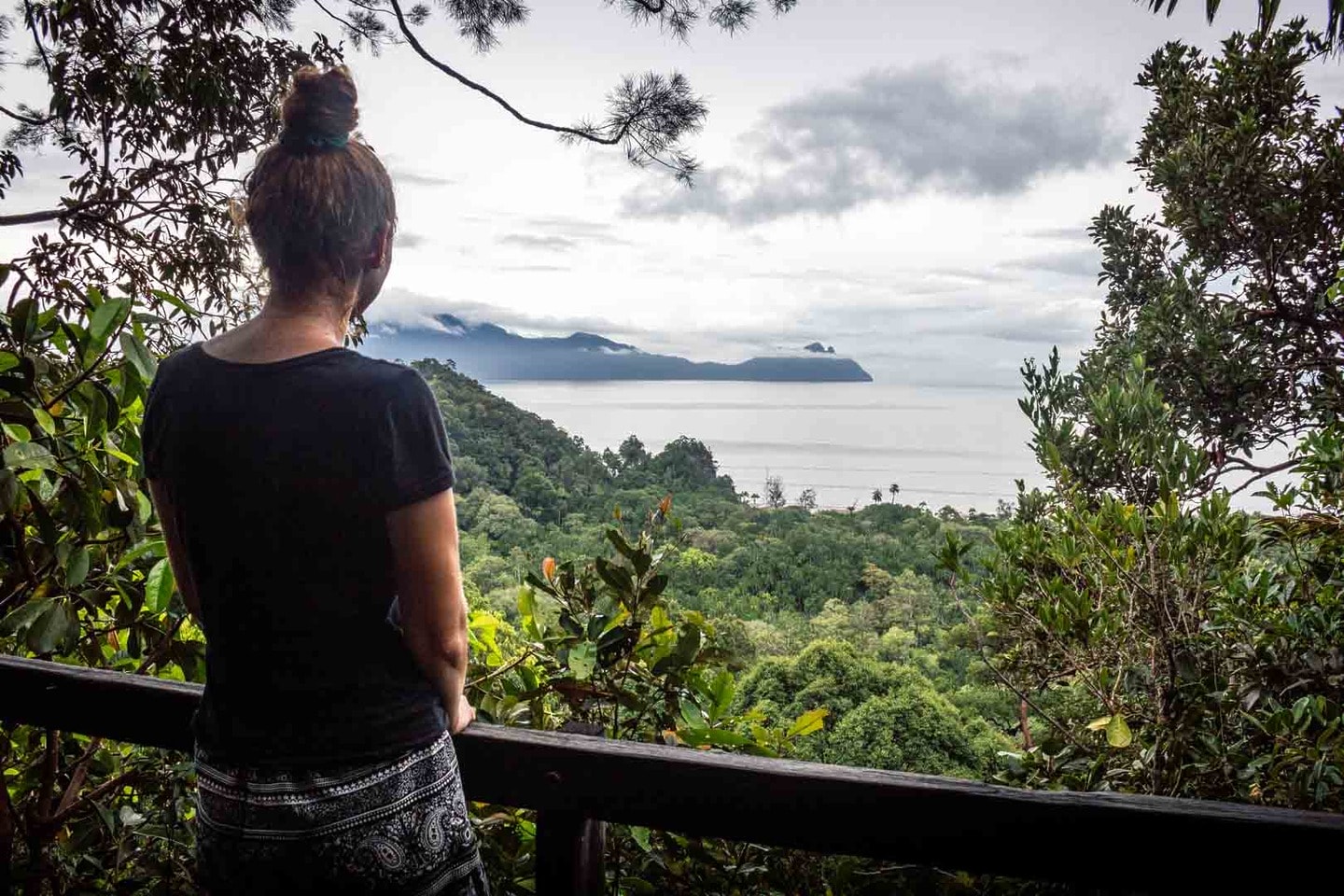
Borneo had been on our bucket list for years, and Bako National Park was one of our favourite spots! Found in the Malaysian state of Sarawak, Bako can easily be visited on a day trip from Kuching.
Although Bako is one of the smallest national parks in Southeast Asia it has so much to offer. Here, you can enjoy scenic treks through the jungle, secluded beaches, and beautiful waterfalls. However, it’s the biodiversity of this national park that blew us away!
Here, you can spot a variety of wildlife including flying lemurs, the Borneon bearded pig, monitor lizards, and macaques. However, the star of this national park has to be the proboscis monkey, which is known for its large nose and pot belly. You’ll probably hear them before you see them too.
Our guide to visiting Bako National Park will cover everything you need to know about this place!
Helpful Information For Visiting Bako National Park

Cost: Entrance fees start from 5 MYR (£0.80) and a return boat ticket which is an additional cost
Where to stay: Chalets, lodges, and hostel rooms are available
How to get there: You can catch the public bus from Kuching to Bako National Park Terminal. From here, you’ll head out to the national park on a boat (you’ll need to purchase your boat tickets upon arrival).
Top Tips For Visiting Bako National Park
- Although the beaches look inviting, do not swim here as crocodiles live in these waters. You’ll also want to stay on the boardwalk trails and avoid heading off into the mangroves for the same reason.
- There are some fantastic viewpoints to visit in Bako including Ulu Assam and Tg. Sapi.
- The Park Headquarters is the only facility located in Bako and is made up of an information centre, toilets, and a small cafe. Before you head off to hike the nearby trails, make sure you go to the toilet!
12. Gunung Mulu National Park, Malaysia

Found in Malaysian Borneo, Gunung Mulu National Park is an impressive UNESCO World Heritage Site. Covering an area of 528 sq km (204 sq miles), this national park is named after Mount Mulu, the second-highest mountain in the state of Sarawak.
Gunung Mulu is most famous for its geological wonders, namely its limestone karst formations. It’s also home to some of the most jaw-dropping caves in the world. One of these is the Sarawak Chamber, the largest cave chamber on Earth at a length of 600 metres (1,968 feet).
This national park is also home to Deer Cave (the Earth’s largest cave passage), and Clearwater Cave (Southeast Asia’s longest cave).
One of the best ways to explore the park is by hiking, and there are several fantastic treks on offer. These include the Pinnacles Summit Trek, the Headhunter’s Trail, and the Gunung Mulu Summit Trek. Another popular attraction is the Mulu Canopy Walk, one of the world’s longest tree-based canopy walks.
Helpful Information For Visiting Gunung Mulu National Park
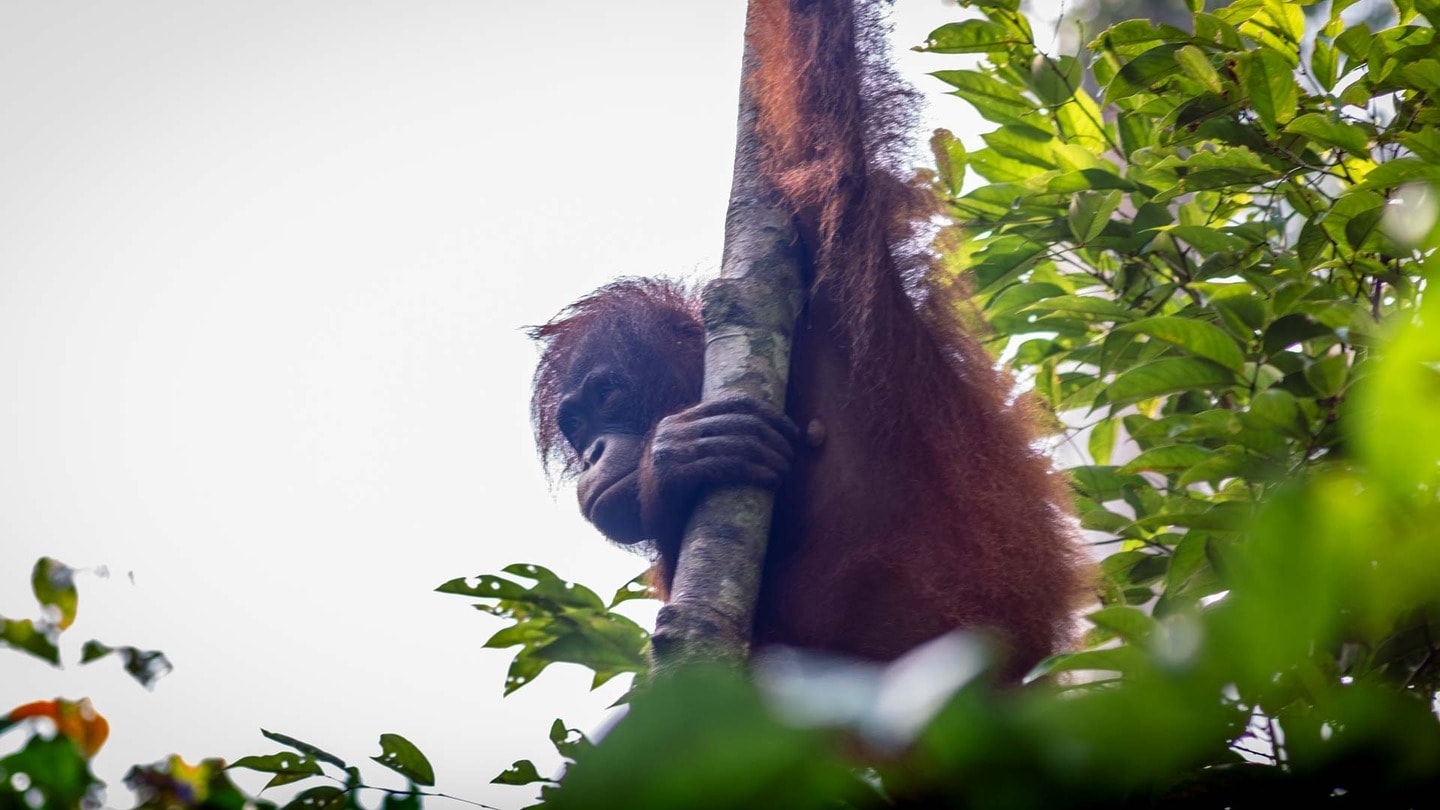
Cost: Everyone must purchase a 5-day tourist pass which ranges from 7 MYR to 30 MYR (£1.17 to £5)
Where to stay: Mulu Marriott Resort
How to get there: Gunung Mulu can only be reached by air. Daily flights to Mulu run from Miri, Kuching, and Kota Kinabalu (journeys take between 30 minutes to 1.5 hours depending on where you come from).
Top Tips For Visiting Gunung Mulu National Park
- Even if you plan to spend less than 5 days in Gunung Mulu, you still have to pay for the 5-day pass. As such, we’d recommend making the most of your visit and staying for the whole duration.
- June to September offers the best weather conditions but temperatures can be very hot.
- Here, you can admire a huge colony of bats (over 2.5 million) as they leave the caves during the evening. It’s a magical sight to behold as you watch them spiral through the skies.
13. Bokor National Park, Cambodia
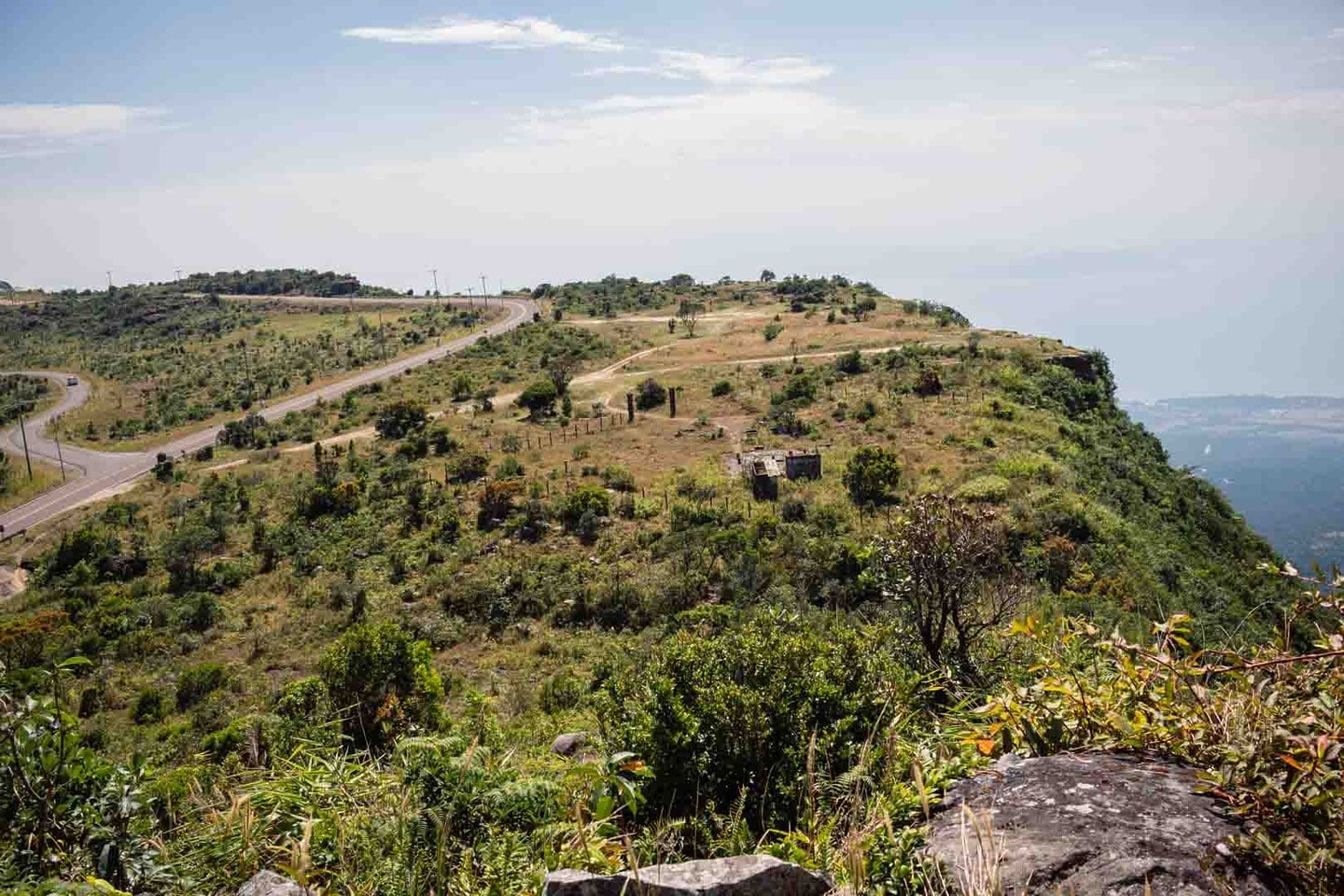
Although not one of the most popular national parks in Asia, Bokor is certainly a must-visit in our opinion. It covers 1,581 sq km (610 sq miles) and is home to dense rainforest, which is where many incredible species call home.
Wildlife found in Bokor National Park includes the clouded leopard, Malayan sun bear, Asiatic black bear, slow loris and pangolin. Elephants and tigers used to roam this area and some reports suggest they can still be found here, but it seems unclear.
There’s a variety of birdlife found in this national park too, including several types of hornbill, so don’t leave this place off your Cambodia itinerary.
Bokor is also famous for its breathtaking panoramas, the best of which can be found at the Hill Station. Although the large hotel found here kind of ruins the atmosphere, you’ll get fantastic views up here on a clear day. There are also a few other attractions to visit in the national park.
Helpful Information For Visiting Bokor National Park
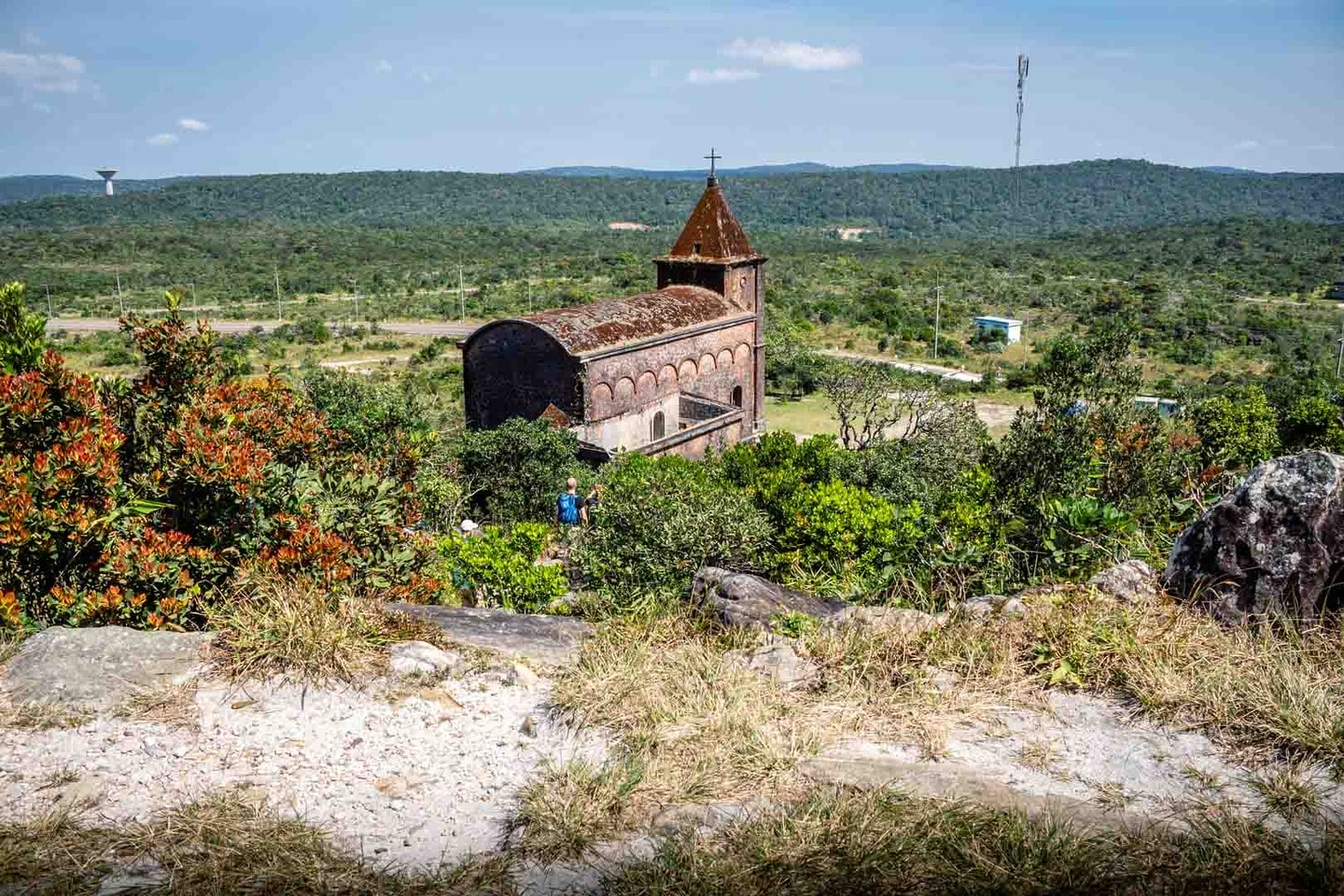
Cost: Day tours to Bokor National Park start from 103,000 KHR (£20) or you can explore self-guided
Where to stay: Hotel Old Cinema
How to get there: From Kampot, you can easily visit Bokor National Park on a day tour. It’s also possible to hire a moped and explore yourself as the national park is just under an hour’s drive away.
Top Tips For Visiting Bokor National Park
- Unlike other national parks in Asia, the chances of spotting wildlife are minimal if you’re just going on a day tour, as these will primarily take you up to the hill station rather than heading somewhere remote.
- Try to time your visit to Bokor with a clear day as there are some fantastic viewpoints on offer.
- For those heading here in the wet season, Popokvil Falls is rather impressive. Other highlights include the Catholic Church and Wat Sampov Pram, with the latter being a must-visit.
14. Khao Yai National Park, Thailand
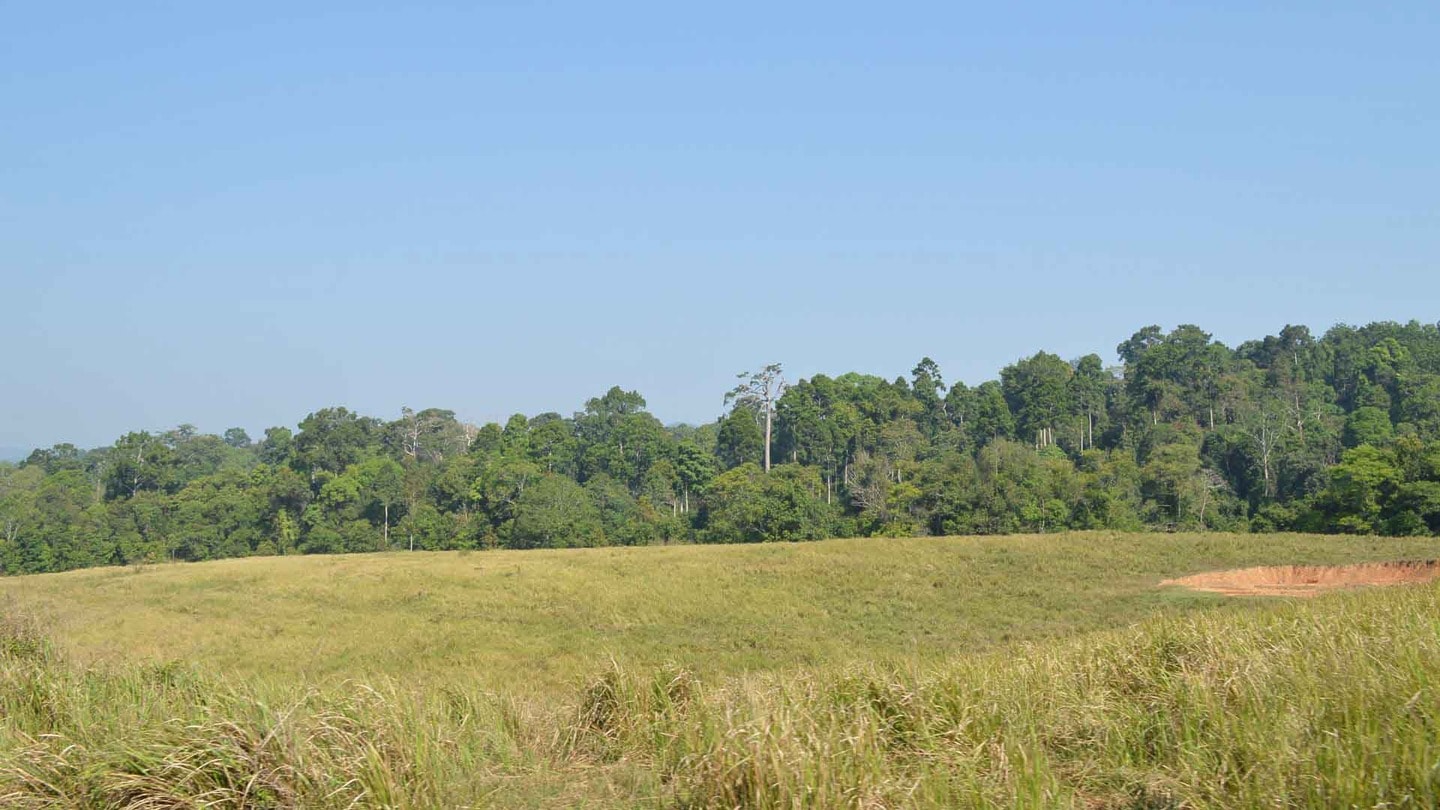
Finally, we have Khao Yai National Park, one of the best places to visit in Thailand. Established in 1962, Khao Yai was the country’s first national park (and is also one of the largest).
The park covers nearly 2,206 sq km (851 sq miles) and is located across four provinces. As one of Thailand’s richest conservation areas, you can expect to find a lot of wildlife here.
Species include the Asian elephant, gaur, gibbon (white-handed and pileated), Asian black bear, dhole, and leopard cat among others. Plenty of bird species call this place home too including the great hornbill.
As well as wildlife-watching, there are plenty of awesome activities on offer in Khao Yai. There are seven short nature hiking trails on offer and people can easily walk these self-guided. Camping overnight in the park is another popular activity especially as there are some fantastic stargazing spots.
Helpful Information For Visiting Khao Yai National Park
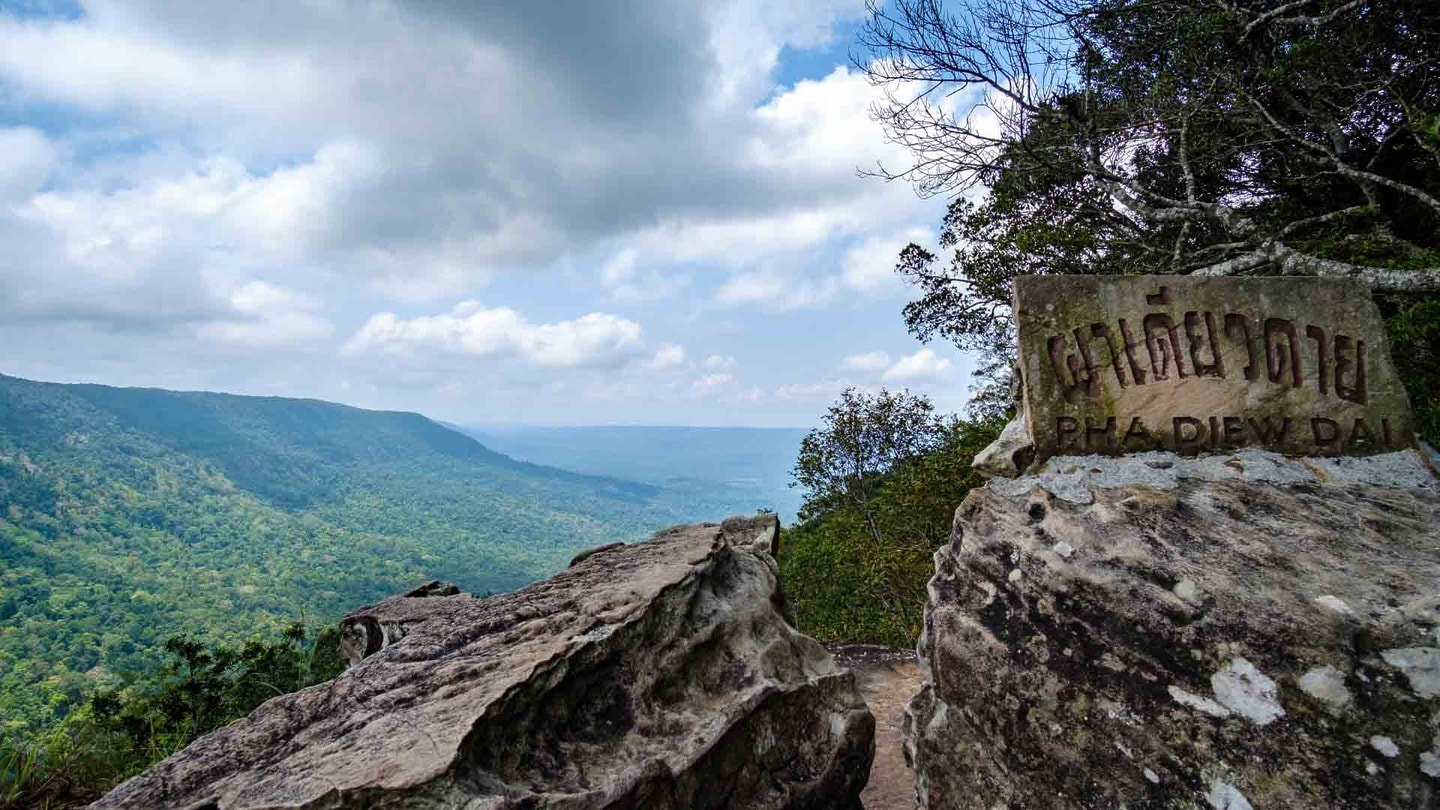
Cost: One-day wildlife tours start from 1600 THB (£35) per person
Where to stay: Lala Mukha Tented Resort Khao Yai
How to get there: There are two entrances to Khao Yai (Pak Chong and Noen Hom), and these can easily be accessed from Bangkok. Both buses and trains are available, and the journey takes between 3-4 hours.
Top Tips For Visiting Khao Yai National Park
- We recommend heading on a night tour or visiting early, as the wildlife will be more active when temperatures are cooler. If you can, head to a salt lick for the best wildlife-watching opportunities!
- It’s best to visit in the dry season which occurs between November and April.
- There are some gorgeous waterfalls to see in Khao Yai if you have the time. These include Haew Narok, Haew Suwat, Haew Sai Fai, and Haew Pratoon.
A Quick Note About Visiting National Parks In Asia

Now, every national park in this guide is worth a visit. However, before you choose a tour operator for a safari or jungle trek, make sure you do your research.
Unfortunately, many of the companies in Asia are very unethical in their approach to these experiences. For example, we know that elephant rides are still a thing in Nepal and in India, and some operators won’t even include an experienced guide on your tour, it will just be the driver.
Before you choose any safari or jungle trek, you must research each company in depth. We’d also recommend checking out the reviews to see what other travellers have said about the experience first.
This is exactly what we did before going whale watching in Sri Lanka and visiting the Amazon Rainforest, as we wanted our experiences to be ethical (and magical). There’s nothing worse than spending all that money (especially as a backpacker), and then having it ruined.
Frequently Asked Questions about National Parks in Asia

How many national parks are in Asia?
There are over 800 national parks in Asia so you’ll be spoilt for choice! Some are of course more accessible than others and many won’t have the biodiversity you’re looking for if you’re planning a safari.
If you’re travelling through Southeast Asia, then Thailand has over 100 national parks for you to visit. India also has plenty of national parks with over 44,000 sq km of the country being protected.
Which country has the most national parks in Asia?
China boasts around 208 national parks so has the most national parks in Asia. The country’s oldest national park is Zhangjiajie National Forest Park which has been around since 1982.
Whether you’re looking to go hiking, mountain climbing, sightseeing, or wildlife-watching, there are endless national parks to visit. However, some of the most popular parks in China include Huangshan, Jiuzhaigou, and Wulingyuan.
Which are the best national parks in Asia for wildlife?
Asia is home to a huge variety of national parks and each one has something unique to offer. However, if you’re looking to spot wildlife then there are a few that stand out from the rest.
In Southeast Asia, some of the best parks to go wildlife watching include Gunung Leuser, Koh Sok, and Taman Negara. You’ve also got the Kinabatangan River in Borneo. Outside of that region, you’ve got Chitwan, Ranthambore, Udawalawe, and Yala.
Which national park is the biggest in Asia?
Although it didn’t make it onto this guide, one of the largest national parks in Asia is Gobi Gurvan Saikhan. Located in Mongolia, it covers an impressive area of around 10,424 sq miles (27,000 sq km).
It’s situated on the edge of the Gobi Desert and is home to plenty of rare animals including the snow leopard and Gobi bear. You can also spot lynx, Gobi camels, argali sheep, and grey wolves.
Final Thoughts on the Best National Parks in Asia
As you can see there are plenty of fantastic national parks in Asia! Not only do many of them offer spectacular scenery, but you’ve also got a great chance of spotting wildlife.
Whether you’re looking to search for tigers in India or spot the elusive orangutan in Borneo, this magical continent has something to offer everyone!
When people think of wildlife watching, their minds often go straight to Africa. However, this part of the world is well-known for its unique wildlife and safari opportunities.
If you have further questions about the best national parks in Asia, don’t hesitate to contact us via Instagram, Facebook, or in the comments below!
If you’re planning a trip around Asia here are some other guides that you may find helpful:
- The Best Places To See Wildlife In Singapore
- Releasing Turtles In Bali, Indonesia
- The Best Places To See Sea Turtles In Sri Lanka
PIN IT FOR LATER!
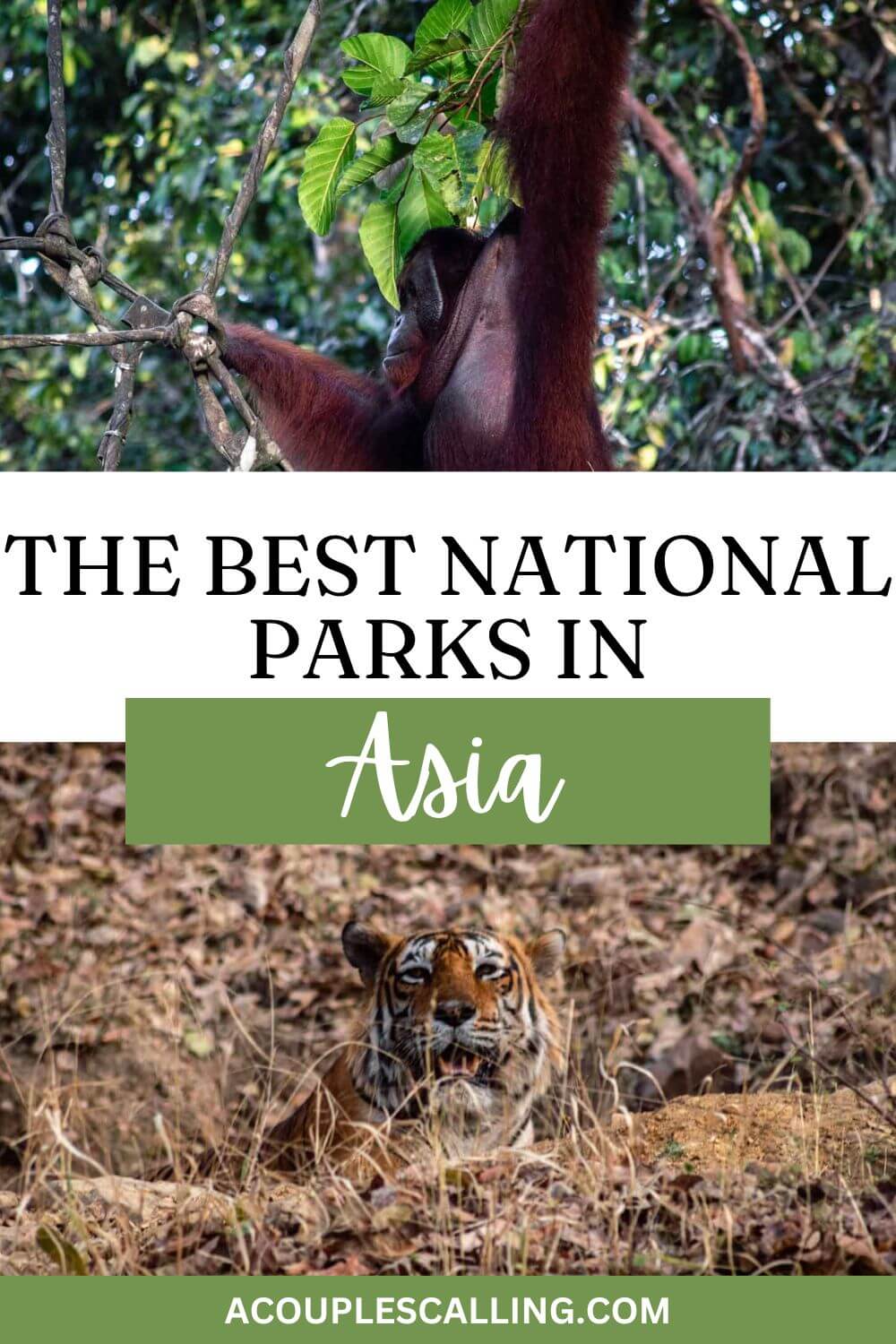
I breathe all things travel and nature, with my favourite place being the great outdoors! After exploring 3 continents, I’ve discovered my passion for travelling on a budget, and I want to help you all do the same. I honestly believe travel broadens the mind which is why I want to share all of our adventures!




